Take the first step towards others
Take the first step towards others
Take the first step towards others
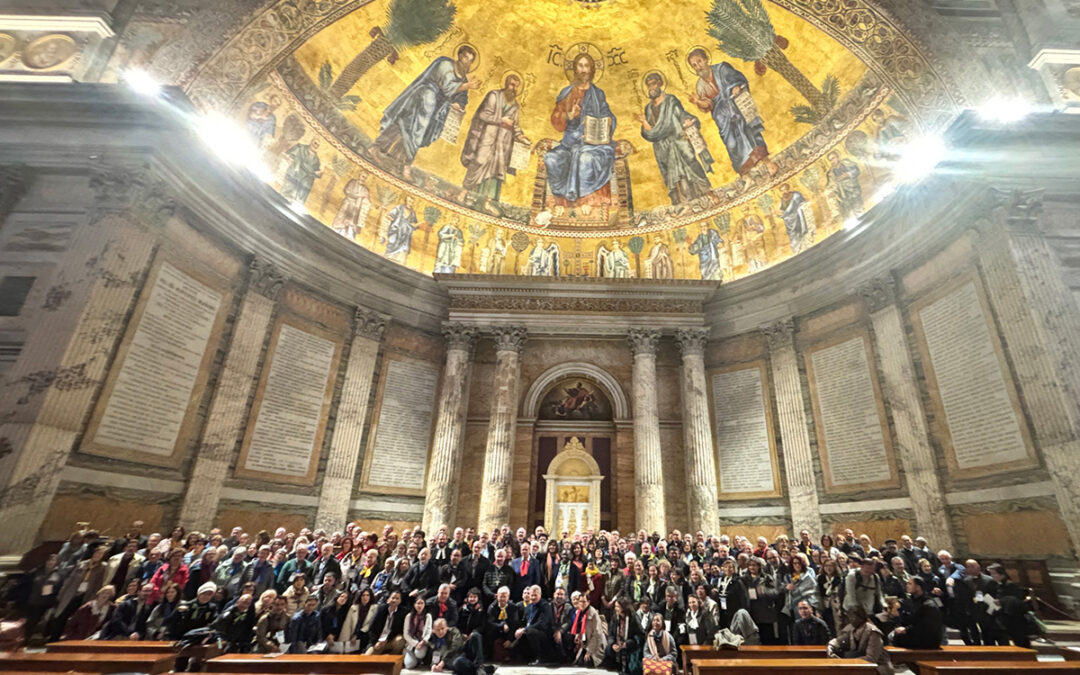
in an interview published on the Vatican News website, during the days of the ecumenical conference entitled “Called to hope – Key players of dialogue” promoted by Centro Uno, the Focolare’s international secretariat for Christian Unity, Margaret Karram, President of the Focolare Movement, said, “Today, more than ever, in the world in which we live, so full of divisions, tragedies, conflicts, where people do not engage in dialogue, meeting together is very significant.” Her words expressed a certainty that resonated in the hearts and in the experience of the 250 people from 40 countries and 20 Christian Churches and of the 4,000+ connected worldwide via streaming, who participated in the event.
The Conference, held at the Mariapolis Centre in Castel Gandolfo from March 26-29th 2025, opened with contributions from Jesús Morán, Co-President of the Focolare Movement and Callan Slipper, an Anglican theologian who said: “Ecumenism, by repairing our personal interactions within the Christian community, allows the Church to be herself. What humanity needs, we need too. Our spiritual health diminishes without it, just as every other dimension of human life cannot reach its fulfilment without the reconciliation brought by Jesus”. Morán concluded: “Unity rather than union and Christianity as a way of being rather than as a doctrine, can be two fruitful paths for ecumenism in response to what history demands of us today”.

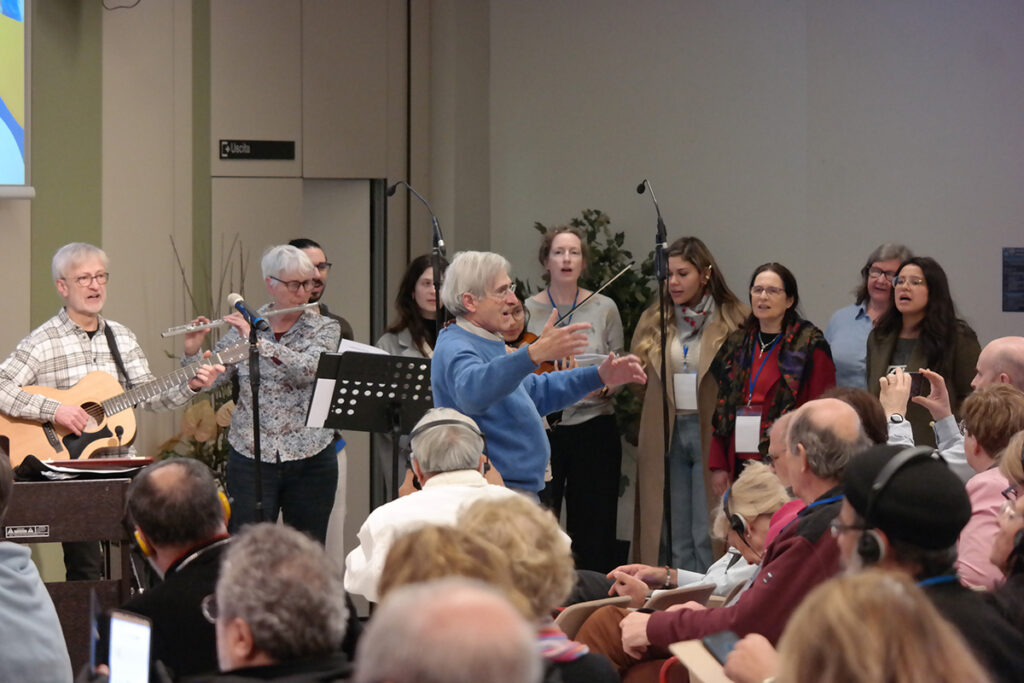
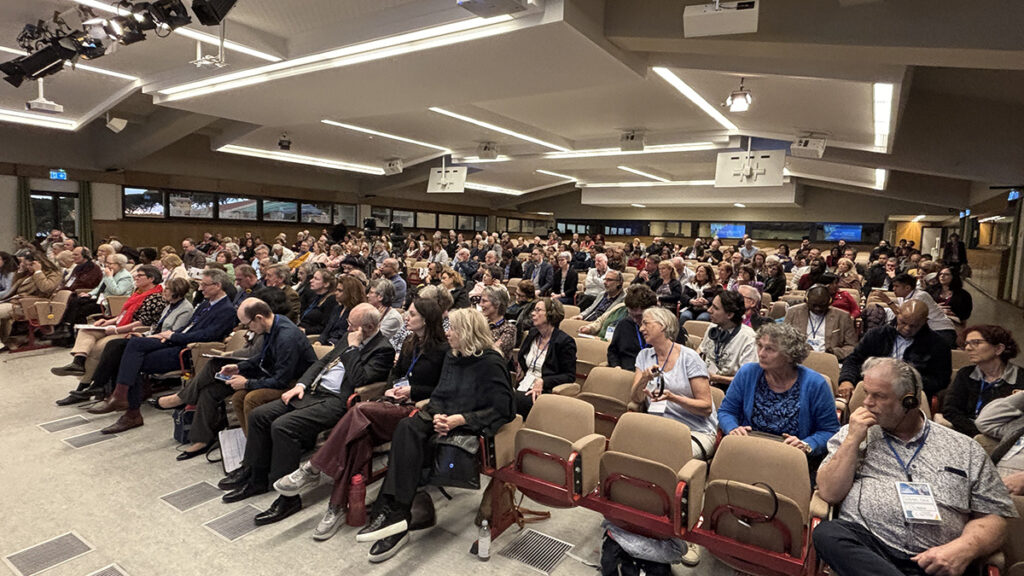
The conference proposed a method for walking in unity: the kind of dialogue that emerges from the spirituality of the Focolare, the dialogue of life, the dialogue of the people alongside a similar concept known as receptive ecumenism. Through her experience, Prof. Karen Petersen Finch, an American Presbyterian, highlighted the importance of involving more people in dialogue on the doctrine of the faith, which is normally reserved only for theologians, Church leaders and official committees for dialogue.
One day was dedicated to a pilgrimage to Rome with a visit to the Basilica of St. Lawrence the Martyr and the Abbey of the Three Fountains, where tradition places the martyrdom of St. Paul. In an atmosphere of recollection, one of the participants described the day as: “an encounter with the first martyrs of the undivided Church who, with their authentic life, faith and their witness, instil in us the courage to proclaim Christ today”. The pilgrimage concluded at the Basilica of Saint Paul Outside the Walls with an ecumenical prayer. Ecumenism has its biblical root in prayer, beginning with Jesus, who while praying, asked the Father: “That they may all be one”. His words, echoed in various passages of Scripture, invite us to ask anything of the Father “in his name, together and in agreement”. And so, together, gathered in unity, priests and lay people of all the Christian confessions present, jointly asked the Father for peace in every corner of the earth and for reconciliation among all Christians.
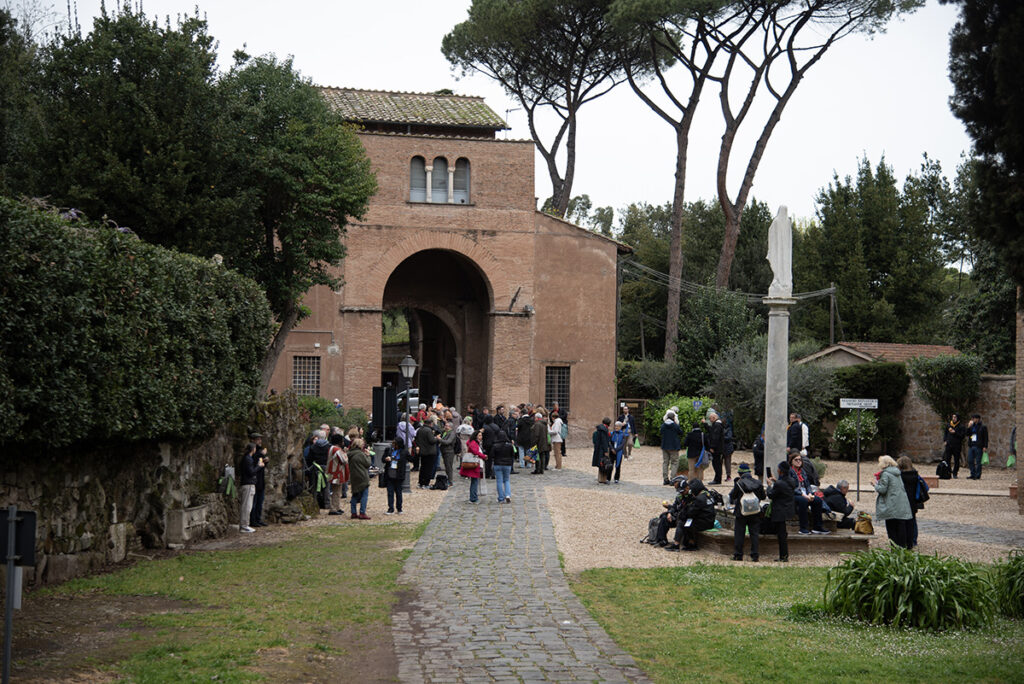
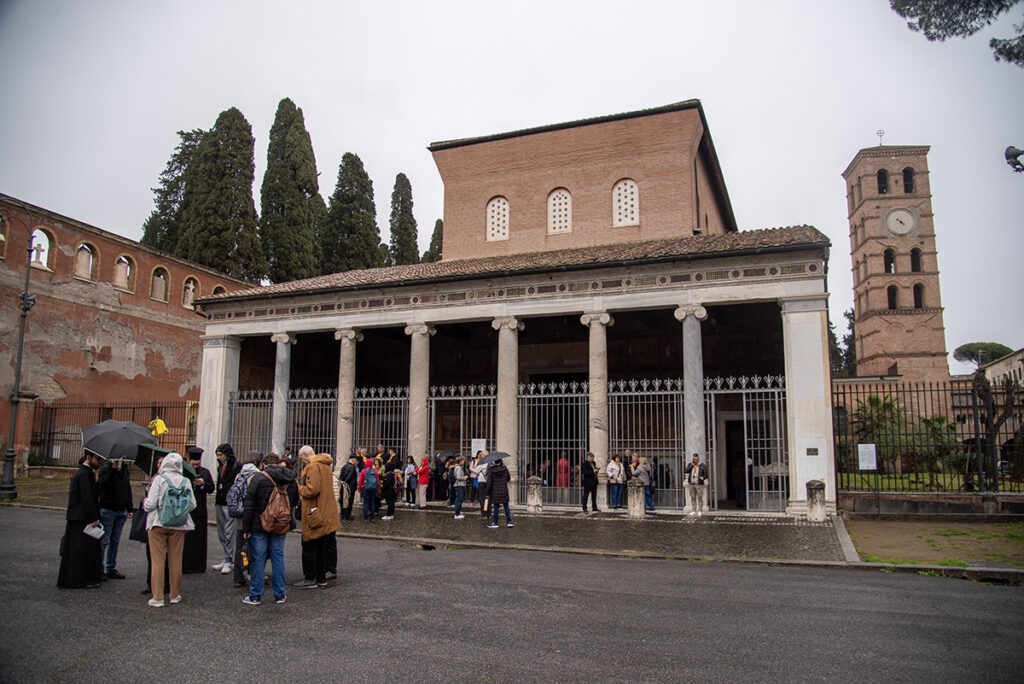
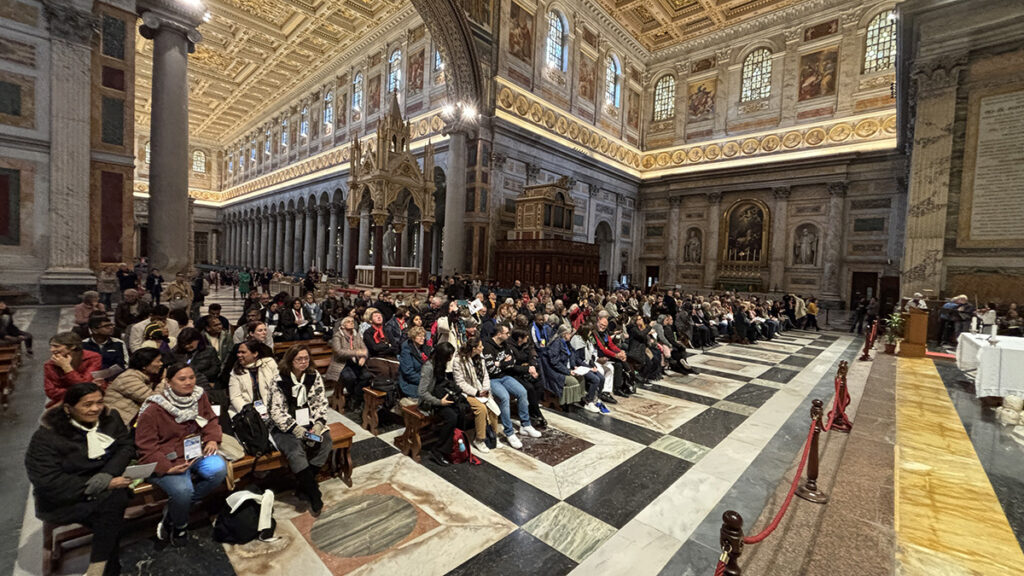
The themes addressed during the conference included the significant commemorations for 2025: the 1700th anniversary of the Council of Nicea; Easter which will be celebrated on the same day by all the Christian Churches; and the 60th anniversary of the lifting of the excommunications between the Church of Rome and that of Constantinople. Referring to the Council of Nicaea, Dr. Martin Illert, a representative of the World Council of Churches, said: “I am convinced that common prayer and reflection pave the way for unity, as they remind us of both our common roots and our shared mission.” Msgr. Andrea Palmieri of the Dicastery for Promoting Christian Unity observed: ” These events are undoubtedly important, but (…) words must be followed by concrete, prophetic decisions. I am convinced that the reflections initiated this year will contribute to the maturation of decisions that may shape the future of the ecumenical journey. ”
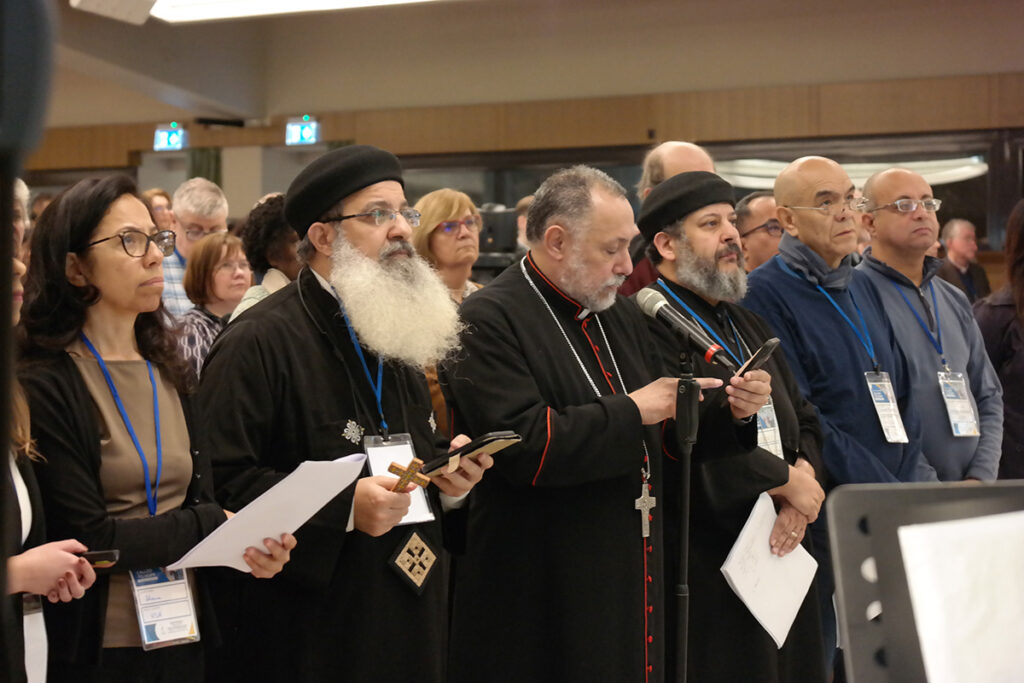
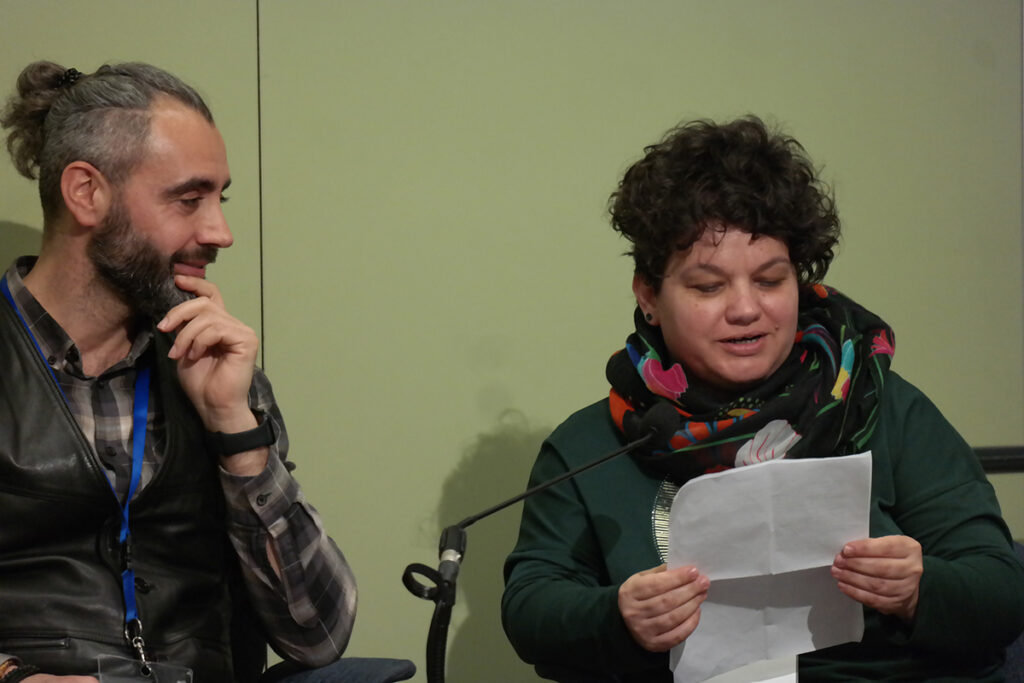
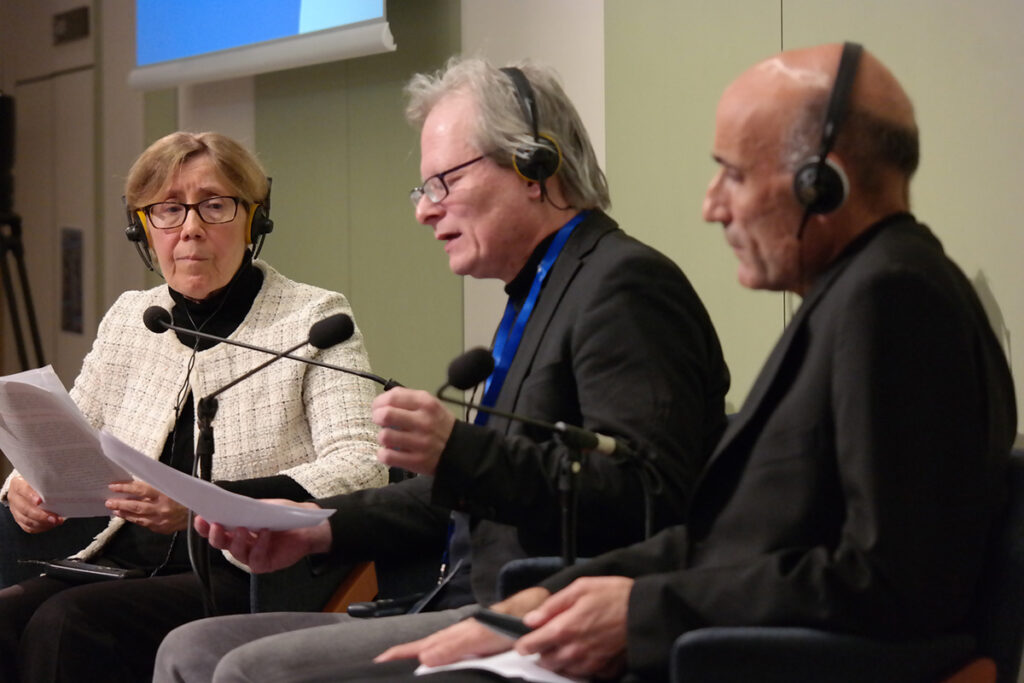
The Conference also explored how synodality can contribute to ecumenism. In a panel featuring participants of the Catholic Church’s Synod: three fraternal delegates (members of various churches), a Catholic Bishop and a Special Guest shared the lived experience of how the active participation of everyone contributed to affective and effective dialogue, which had as His Eminence Khajag Barsamian, of the Armenian Apostolic Church said, a “strong ecumenical dimension, which emphasized unity, shared spiritual experiences and mutual respect among Christians”. Rev. Dirk G. Lange of the Lutheran World Federation, affirmed, “The whole Synod as a spiritual exercise profoundly influenced my understanding of myself, my ministry, and my Church”. Monsignor Brendan Leahy, Catholic Bishop of Limerick (Ireland), added that the Synod’s method, the “Conversation in the Spirit,” made him “more attentive in my work and ministry to listen more, recognizing the seed of truth in every person,” while Dr. Elizabeth Newman of the World Baptist Alliance stated that synodality is grounded ” in the awareness and practice that one’s own point of view must not prevail. You don’t have to ‘win’.” Margaret Karram emphasized: “We know that hope is a virtue and we cannot lose it. We must nurture it, cultivate it within us so that we can give it to others,” and she invited everyone to increase hope and faith through “even small gestures towards others: gestures of solidarity, communion, and openness… only in this way can we hope”.
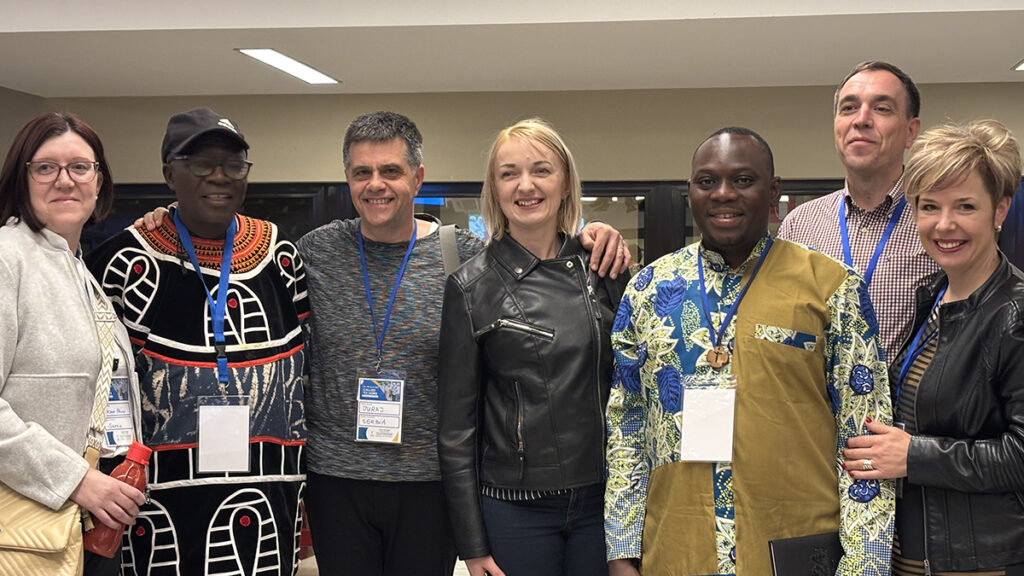
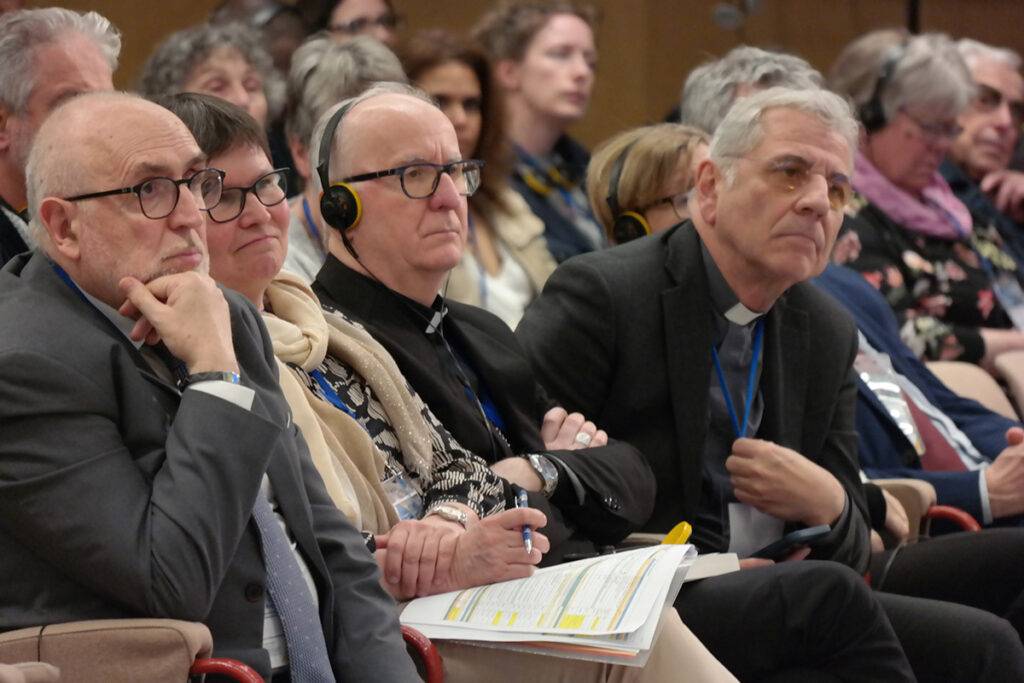
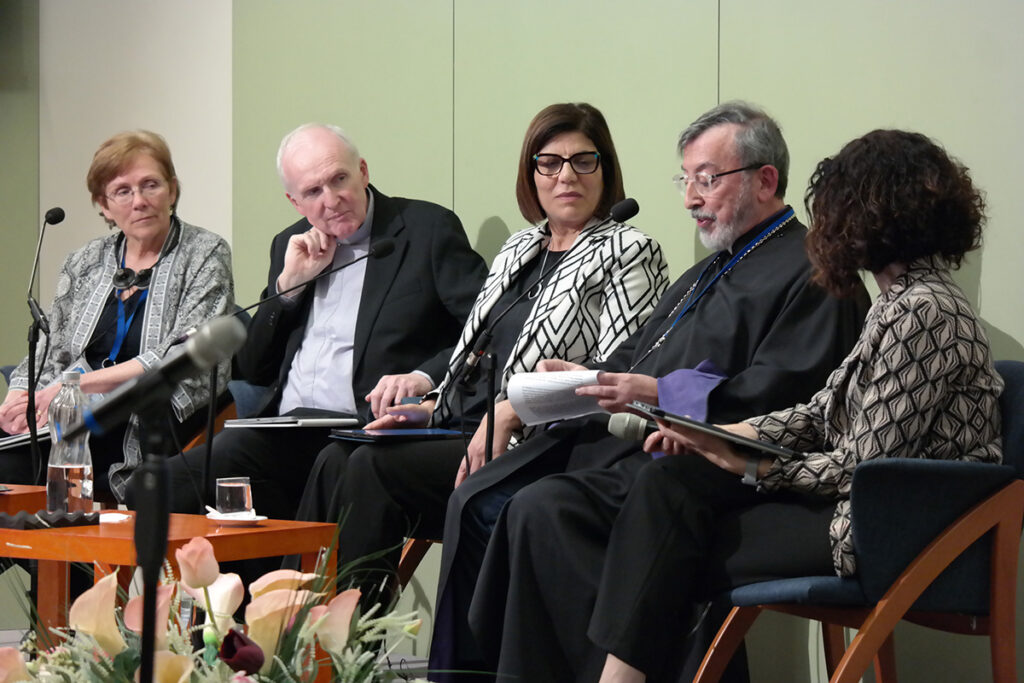
In summary, the Conference was a call to hope, marked by reflection, in-depth discussions, concrete actions and life testimonies which illustrated the path of ecumenical action at the global level (Global Christian Forum, JC2033), at the international level (Ikumeni– Latin America, Together for Europe, John17) and at local level (from Brazil to the Philippines, from Northern Ireland to Serbia, from the Netherlands to Venezuela, from Germany to Uganda…). It engaged churches, priests, laypeople, theologians, scholars, adults, and young people—truly, all were key players in the dialogue.
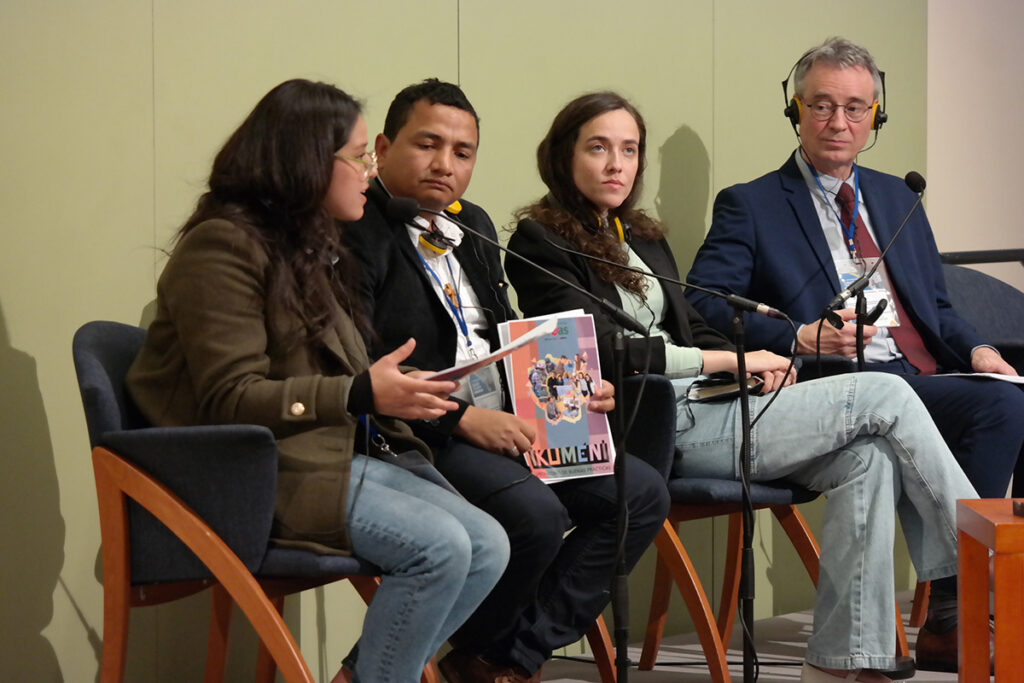
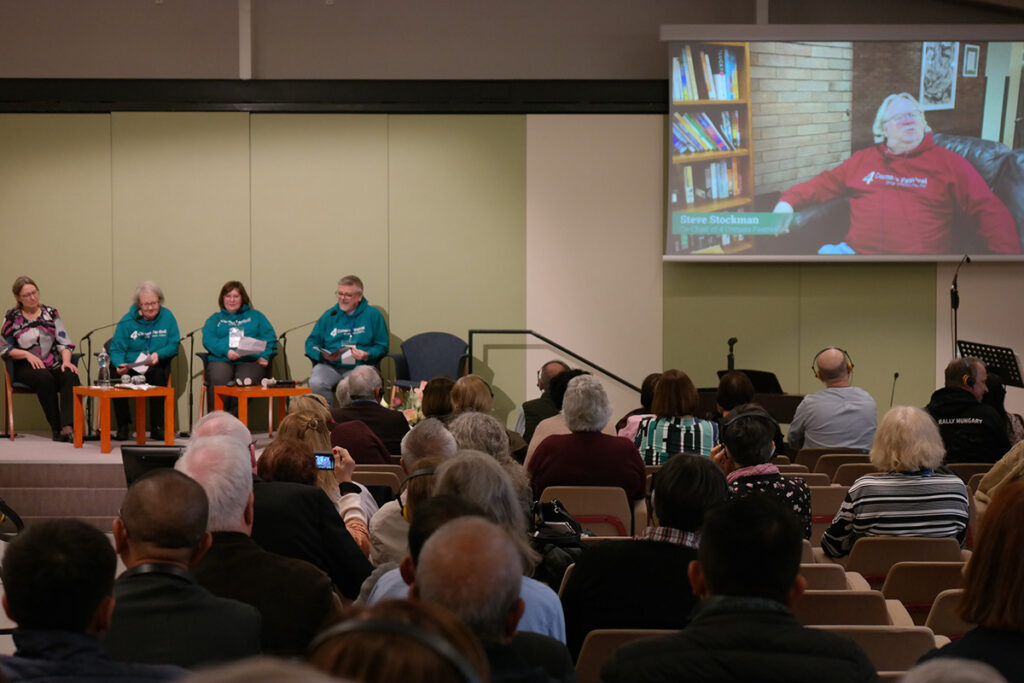
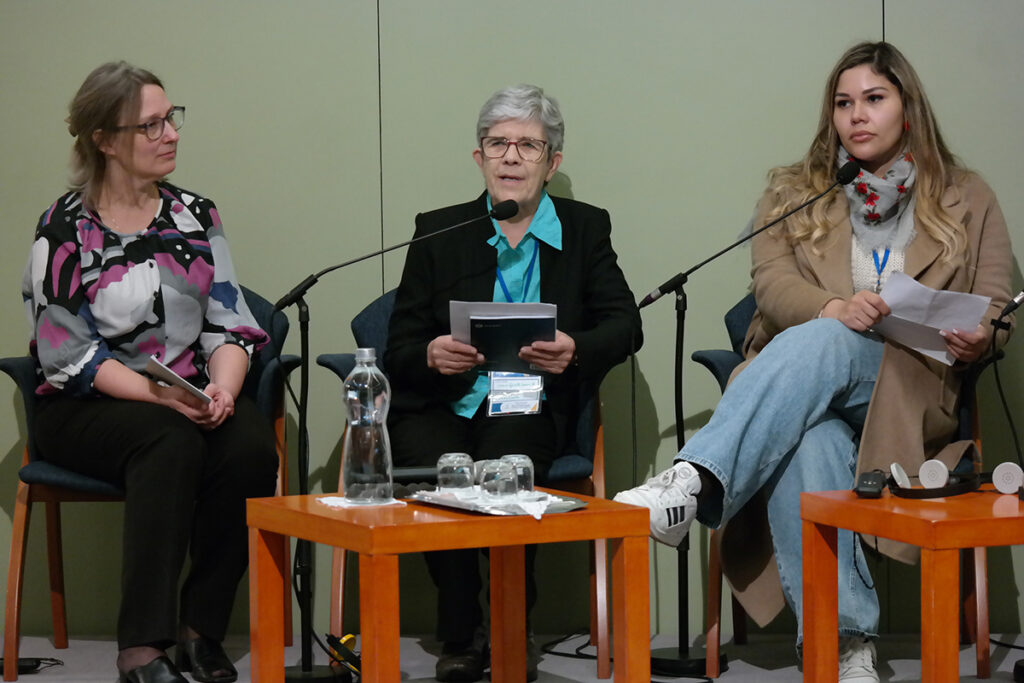
Carlos Mana
You can view the streaming of the Conference on the focolare.org Youtube channel
(Photo: © Javier García, Joaquín Masera, Carlos Mana – CSC Audiovisivi)
Be available
Give joy to those close by
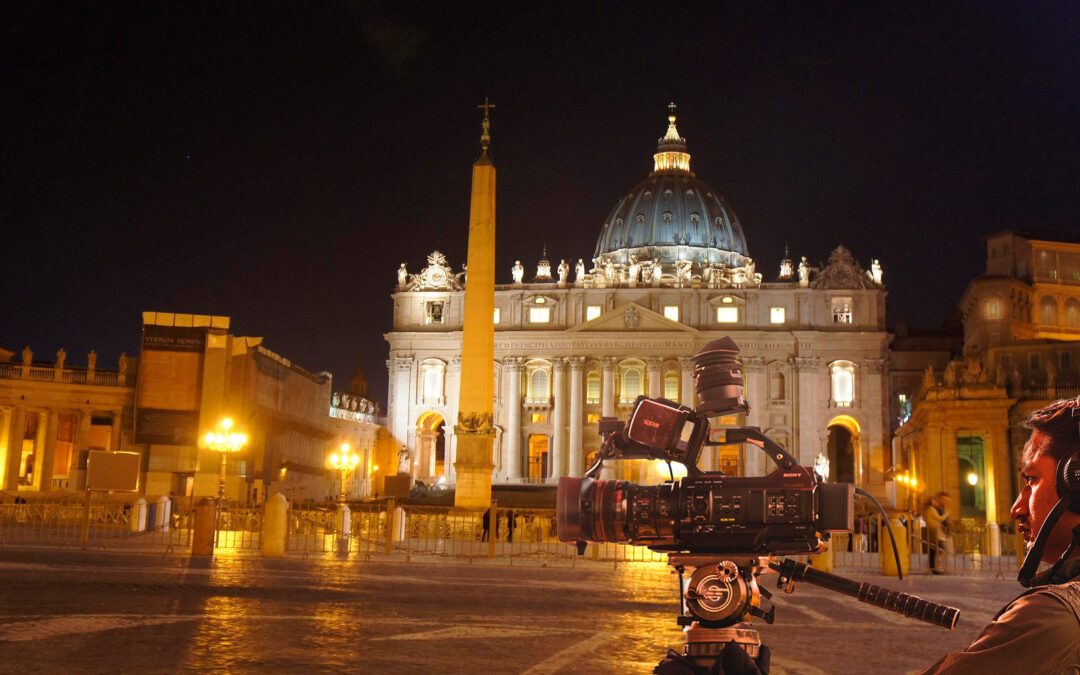
For over two years, on the initiative of NetOne, the international network of communicators of the Focolare Movement, a group of communication professionals, has been meeting online every month to explore themes related to the Synod of Bishops, in particular on synodality and communication. Key elements during these meetings include listening, silence, testimony and fraternal communication. In addition to these regular sessions, two webinars have taken place over the past two years: the first in April 2024 (an in-depth analysis is available online here) and the second in February 2025 entitled, “What kind of communication for synodality?” (VIDEO) This event was followed in various parts of the world with the participation of numerous communication experts connected from several countries.
Alessandro Gisotti, deputy director of Vatican Media, opened the series of interventions by citing three essential terms for a good communicator: Communication, Action and Community. He said, “In this Holy Year, we need a synodal communication that is able to accompany the people who will come, without the presumption of wanting to lead them but available to listen to them, to accompany them, to share a part of the journey together”.
From the United States, Kim Daniels, Professor at Georgetown University in Washington DC, Coordinator of the Synod of Study Group 3 explained, “Mission in the digital environment – our goal is to offer actionable recommendations to the Holy Father for the improvement of the Church’s mission in this digital culture, ensuring that it remains firmly rooted in our call to meet people wherever they are, leading them towards a deeper communion with Christ and with each other”.
Pál Tóth, a Professor at the Sophia University Institute in Loppiano, spoke from Hungary, explaining that “healing the deep wounds of the globalized world requires transversal collaboration including with those whose views differ from our own. The idea of differentiated consensus promotes a new type of social relationship: we collaborate for the realization of some values while remaining on different platforms for others”.
The starting point of the Synod is those on the margins. This emerged from the experience of Muriel Fleury and Beatrice Binaghi, respectively Head of Communication and Social Media Officer at the Dicastery for Integral Human Development. “Speaking for those who are exploited or marginalized by dominant processes means making these people visible. Without these countercurrent voices, everything would favour those who dominate, because silence supports those who mistreat, enslave, exploit, or render too many men and women invisible “. Binaghi described the collaboration network created among the “border bishops” responsible for migratory pastoral care in Colombia, Costa Rica and Panama, especially to address the critical situation in Darien through which hundreds of migrants pass every day. “Dialogue and communication have created communities, and the work that was previously fragmented is now more synergistic and impactful”.
The actress Stefania Bogo was asked to give two moments of reflection through an artistic reading of selected passages from the recent encyclical of Pope Francis, Dilexit nos and Chiara Lubich’s “The attraction of modern times”.
Erica Tossani, of the Presidency of the Synodal Assembly of the Italian Church, explained how important it is to listen, that “it is not merely a passive action, a silence waiting to be filled by the words of others. It is an active attitude that involves attention, discernment and a willingness to be challenged. Without listening, communication degenerates into polarization and sterile opposition”.
The experiences of synodality included that of Paolo Balduzzi, correspondent for the Italian Rai 1 program “A sua immagine”. He explained, “The stories told arise from a dialogue shared with the entire editorial team. For me, every interview is an encounter. And synodality begins with this encounter with my interlocutor, that is, entering into their story, into their lived experience and together seeking to grasp the most essential aspects of their story”.
The story of Mariella Matera, blogger of Alumera, a space for evangelization on social media, is the story of a communicator fascinated by the idea of transmitting the Gospel through the internet. She asked herself, “How can I be a little bridge between the web and Christ? In the Calabrian (southern Italy) dialect, the word Alumera refers to the old type of oil lamp. Just as the lamp, as long as it has oil, does not go out, so too I, as long as I have the love of Christ in me, cannot be silent”.
In conclusion, Anita Tano, head of communication for United World Project-NetOne Argentina recounted the experience of Genfest 2024 in Brazil, the youth event of the Focolare Movement which had the theme Together to Care. Featuring cultural exchanges, art and workshops, the aim was to recognise communication as a tool to take care of “one’s own life, that of others and that of the planet”. A message that emphasized the difference between simply being “connected” and being truly “united.”
The live broadcast was moderated by Enrico Selleri, presenter and author of the Italian Church broadcasters Tv2000 and InBlu2000, along with Sara Fornaro, editor-in-chief of the web version of the Italian magazine Città Nuova. The event was promoted by NetOne together with the General Secretariat of the Synod of Bishops, the Dicastery for Communication, the Dicastery for the Service of Integral Human Development, Vatican Media, the Synodal Way of the Church in Italy, TV2000, InBlu2000 and SIR (of the Italian Episcopal Conference), the Sophia University Institute, Weca (Association of Italian WebCatholics), the Città Nuova Editorial Group and the Pontifical University of the Holy Cross.
For more information and to stay in touch: net4synodcom@gmail.com
www.youtube.com/@SynodalCommunicationNetwork
Lorenzo Russo
Photo: © Pixabay
Promote dialogue with someone who is different from me

“I think that, after Don Silvano Cola, Don Pepe, was the most charismatic Focolare priest I have ever known,” remarked a priest from Italy upon hearing the news of the death of Don Enrico Pepe on 2nd March, 2025 at the Focolare Priest’s Centre in Grottaferrata (Rome). “He was a person with a pure gaze. He saw people in truth and also in mercy”, said another from the USA. Cardinal João Braz De Aviz, emeritus Prefect of the Dicastery for Consecrated Life, who presided at the funeral, said in the homily: “I thank the Lord for the care he has had for us priests, helping many not to lose the gift of the Christian life and the ministerial priesthood, because we were strengthened by the continuous search for unity among ourselves, with the Church and with the Work of Mary”.
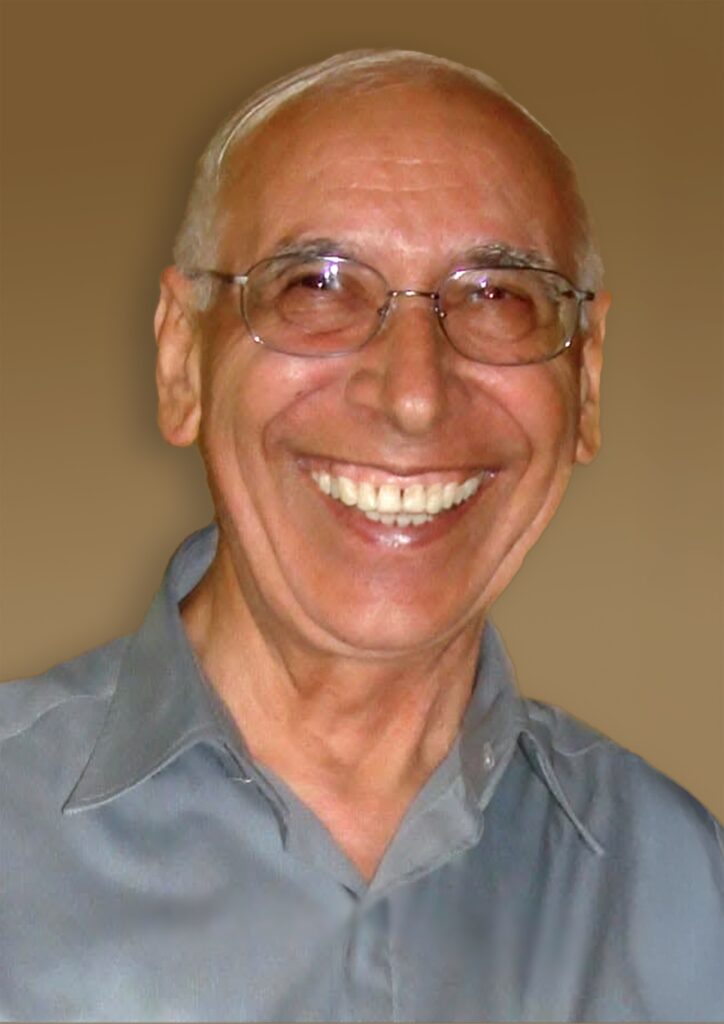
But who was Don Enrico Pepe? He shared a lot about himself in the book, An Adventure in Unity (CNx 2018).
Enrico was born on 15th November 1932 in Cortino (Teramo, Italy), the first of nine brothers and sisters. Despite the shadows of war, he enjoyed a happy childhood. Late in life, he would gladly return to those places, also to reconnect with the warmth of his loved ones: the Pepe “tribe”, now numbering 76 nieces, nephews and great nephews and nieces.
During his secondary school years, Enrico felt called to the priesthood and entered the seminary. He experienced a moment of doubt when a young woman was affectionate towards him, but precisely in that circumstance, he renewed his choice with even greater awareness.
He was ordained a priest in 1956 and in 1958 the Bishop sent him to Cerchiara, a town near the Gran Sasso, divided by two political factions that also affected the parish. Don Enrico, with his evangelical “cunning”, manages to carve out his path and the situation soon calmed down.
In 1963 he met the Focolare Movement. Together with Don Annibale Ferrari, he travelled every fortnight from Teramo to Rome to meet Don Silvano Cola at the first Priests’ focolare. A year later he was offered the opportunity to move to Palmares in the North East of Brazil, where Bishop Dom Acacio Rodrigues had turned to the Focolare Movement, due to the serious shortage of priests. In 1965 Don Pepe became the parish priest in Ribeirão, in an area of sugar cane monoculture with burning social and moral problems. He responded with a pastoral approach enlightened by the Second Vatican Council and by his own common sense. Over the years, a Priests’ focolare was born, a community in which Dom Acacio frequently participated.
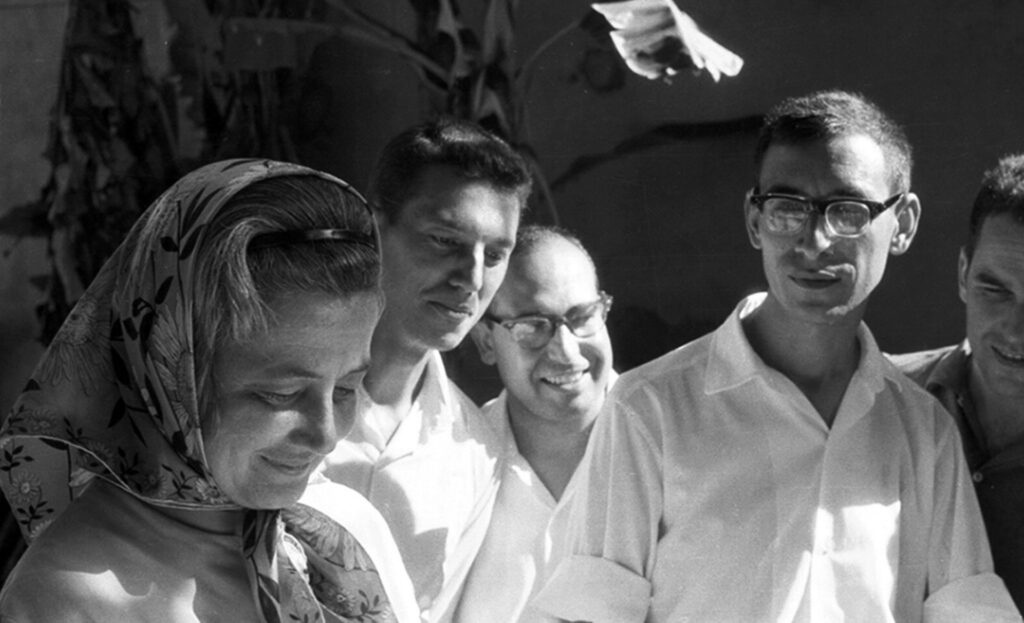
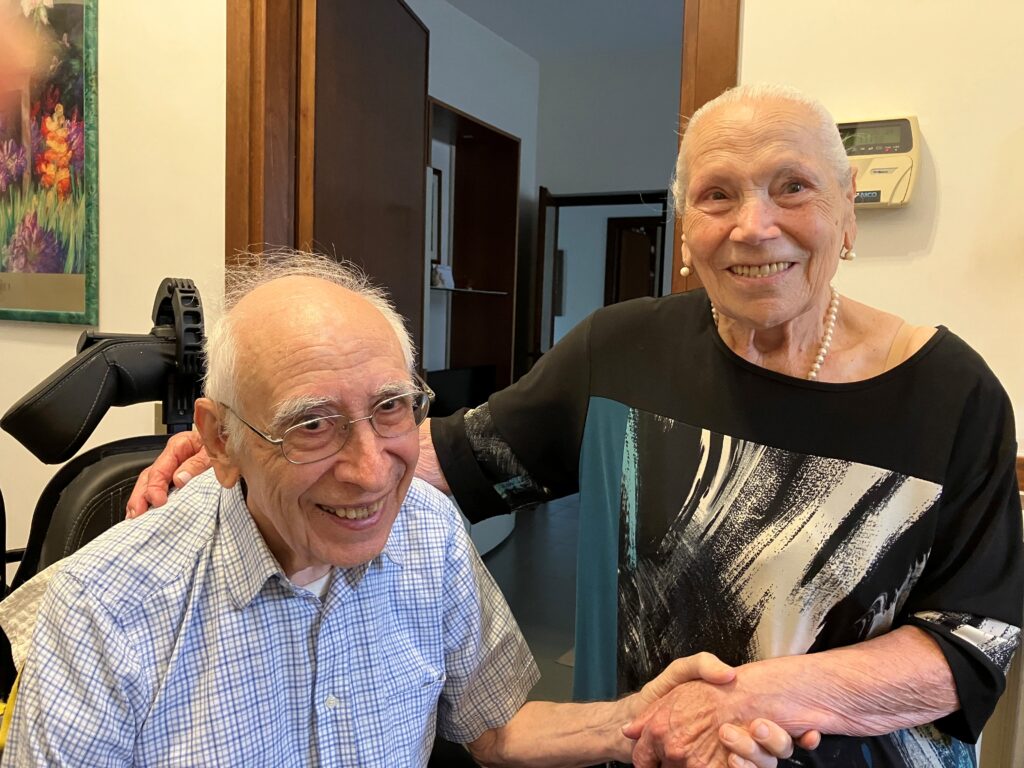
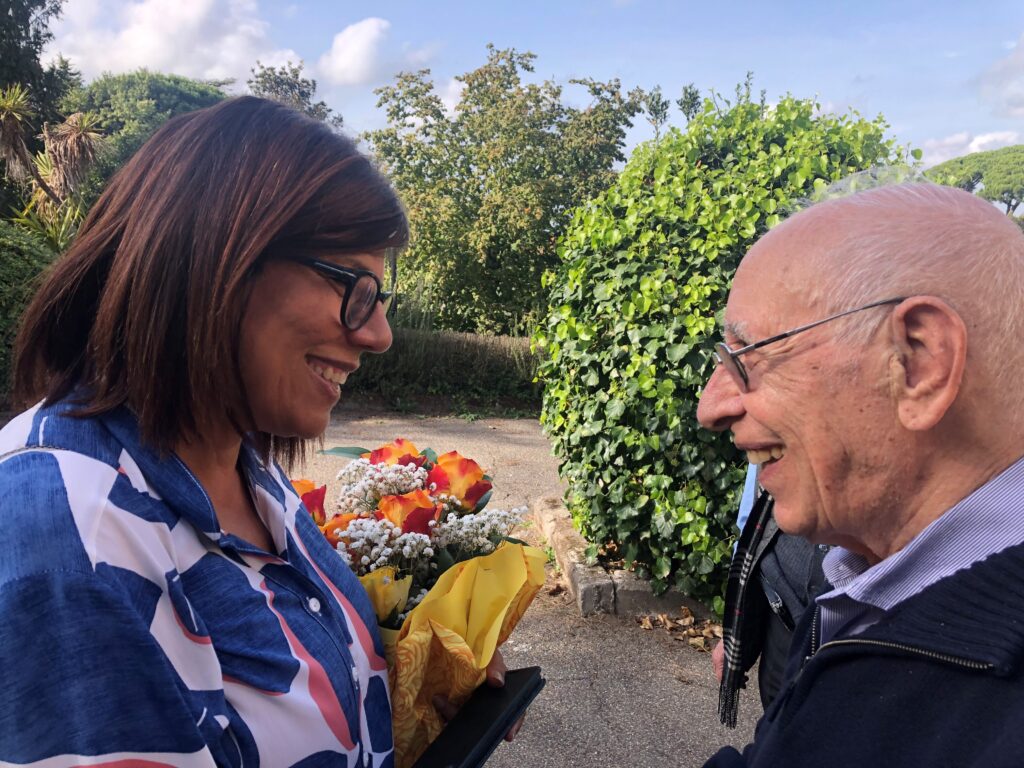
After a few months back in his homeland, in 1969 he left again for Brazil, this time to devote himself entirely to the Movement and to develop the spirit of unity among priests. In 1972 he relocated for this purpose to the Mariapolis Araceli, the little town of the Focolare near Sao Paulo. Years later, Don Pepe wrote to Pope Francis, “At that time, the Church in Brazil was going through a tremendous crisis, especially among the clergy. Together with the focolarini, I began to offer the spirituality of unity to diocesan and religious priests and seminarians. In this way, a new and joyful life was awakened in many dioceses and religious congregations.” This led to an unexpected result: “In the early 1980s, the Holy See began to appoint some priests who lived this spirituality as bishops”.
In 1984, Don Pepe was called to the Priests’ Focolare Centre in Grottaferrata (Rome), to look after, together with Don Silvano Cola, the thousands of priests who were living the spirituality of unity and the life flourishing in parishes around the world. In his spare time, he compiled the lives of Martyrs and Saints. This led to a book by the publisher Città Nuova that was so well received that he was asked to expand it to three volumes.
In 2001, the case of the Zambian Archbishop Milingo broke out. When he repented, the Holy See sought someone to guide him through a process of renewal and turned to the Focolare Movement. Don Pepe was assigned this task. Years later, Cardinal Bertone, then Secretary of the Dicastery for the Doctrine of the Faith, wrote to Don Pepe: “We met at a special moment in the life of the Church in Rome, without ever having met in person, but we sensed a convergence of ideals, of mission and of transmitting God’s merciful love, which sealed our relationships.”
In his later years, he faced significant health challenges. Don Pepe commented “In Brazil I passed through many airports and now I often see myself on the runway, ready for the final flight, the most beautiful one, because it will bring us to the Beyond”.
Hubertus Blaumeiser
Look to the future with hope
Get out of your own box!
Live the present moment
Trust in God

Nostalgia is a very specific feeling and, in many people, it often gives riseto moral, philosophical and spiritual questions. Etymologically it means “pain of return,” and sometimes has an indeterminate sense: sometimes it is not linked to a past made up of real places, people or events but to a deep emotion that makes us yearn for something beautiful, just and universal. It is as if we know we are part of it or called to this “something”.
The theme of exile runs through the history of human thought: the voyage of Odysseus (sung in Homer’s Odyssey) is a journey that recalls the infinite because although it is unfinished and open-ended, it also conveys a sense of wisdom.
(…)
“Keep Ithaca always in your mind. Arriving there is what you are destined for. But do not hurry the journey at all. Better if it lasts for years. (…) And if you find her poor, Ithaka won’t have fooled you. Wise as you will have become, so full of experience, you will have understood by then what these Ithakas mean.”[1]
Every story of exile, whether it is taken from ancient civilizations or the present day, addresses existential questions that are fundamental to all ages: does this story have meaning? Is there a “thread” behind it all? This question can also be addressed on a personal level: is there meaning to what I am experiencing or have experienced? Why the evil, the pain, the death? These are questions that are often not asked but, according to recent studies, they are deeply felt by young people and express their real needs. Nostalgia for the infinite is often manifested in melancholy, loneliness and a search for reasons and answers. [2]
Yet these questions struggle to emerge: we are distracted by what is happening around and by the worries that torment us. Perhaps we do not pause long enough to recognise the little answers that surround us that can be a light to help us maintain a sense of purpose in life.
So let us try to look for opportunities where we can find time and space for sharing, listening and reflecting with those who travel through life with us. Let’s do so with our community, our friends and work colleagues. Let’s tackle these questions without losing faith that things can change for the better. We too will feel changed as a result.
In Christian communities all over the world, Easter is celebrated this month. The message that lies behind the “three days” that are central to this season is strong: it poses questions for all people who are ready to reflect and are open to dialogue[3]. The mystery of pain, the ability to “enter” into the wounds of humanity and the strength to begin again are the values shared by every person who accompanies us as we journey forward through difficult times.iii They are a personal guide for us at all times.
© Photo da StockSnap/Pixabay
THE IDEA OF THE MONTH is currently produced by the Focolare Movement’s “Centre for Dialogue with People of Non religious Beliefs”. It is an initiative that began in 2014 in Uruguay to share with non-believing friends the values of the Word of Life, i.e. the phrase from Scripture that members of the Movement strive to put into practice in their daily lives. Currently, THE IDEA OF THE MONTH is translated into 12 languages and distributed in more than 25 countries, with adaptations of the text according to different cultural sensitivities.
[1]Konstandinos P. Kavafis. Poesie, Mondadori, Milano 1961
[2]Istituto Giuseppe Toniolo: Cerco, dunque credo? (Vita e Pensiero, 2024) cura di R. Bichi e P. Bignardi
[3]Convegno Internazionale “Il senso nel dolore?” (Castel Gandolfo, 2017) https://www.cittanuova.it/senso-neldolore/?ms=006&se=007
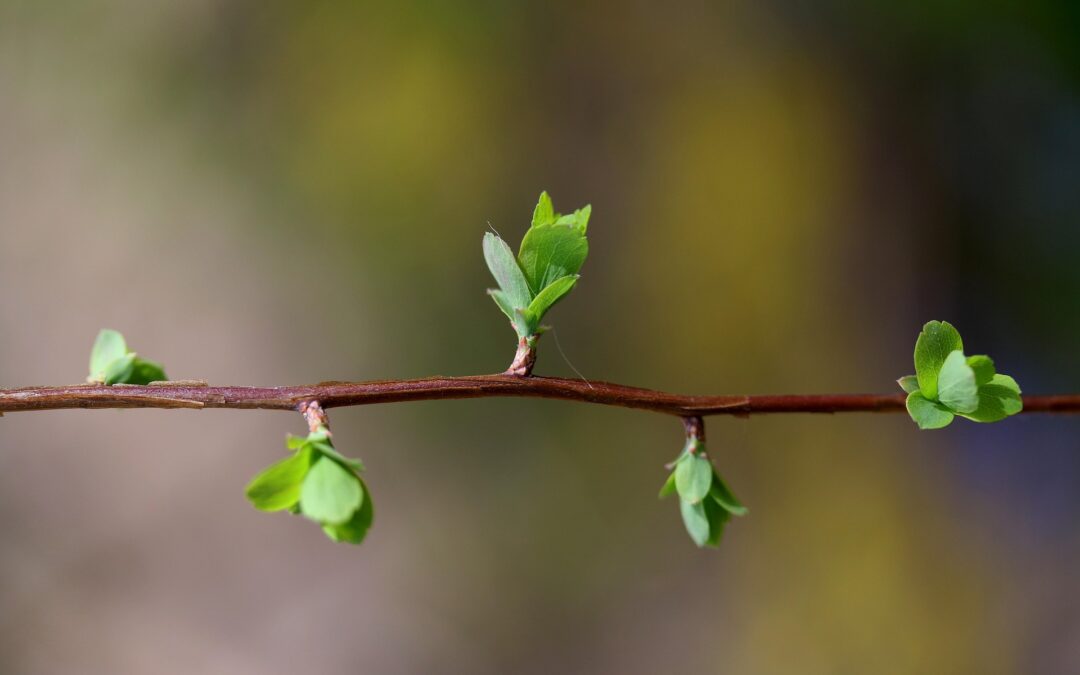
The exile in Babylon and the destruction of the temple in Jerusalem created a collective trauma for the people of Israel and gave rise to a theological question: they asked themselves, ‘Is God still with us or has he abandoned us?’ This month’s Word of Life is taken from the part of the book of Isaiah that endeavoured to help the people understand that God was still at work. They could trust him and would, eventually, be able to return to their homeland. In fact, the face of God the creator and saviour is clearly revealed during this experience of exile.
See, I am doing a new thing! Now it springs up; do you not perceive it?.
Isaiah reminds us of God’s faithful love for his people that remains constant and unchanged during the dramatic period of exile. Even though the promises made to Abraham seem unattainable and the covenant seems to be in crisis, the people of Israel are in the privileged position of continuing to experience God’s presence in history.
The prophetic book addresses existential questions that are still fundamental today: who determines the unfolding of history? Who determines its meaning? We can ask these questions on a personal level too. Who holds my fate in their hands? What is the meaning of what I am experiencing now or have experienced in the past?
See, I am doing a new thing! Now it springs up; do you not perceive it?.
God is working in each person’s life and is constantly, doing ‘new things.’ If we do not always notice or can understand their meaning and scope, it is because they are still springing up or because we are not ready to recognize what he is creating. Perhaps we do not pause long enough to observe these tiny shoots of life that are a certain sign of his presence because we are distracted by all that is happening around us or because thousands of thoughts and worries invade our souls and weigh us down. Nonetheless, he never forsakes us and is continually creating and recreating our lives.
“We are the ‘new thing,’ the ‘new creation’ that God has generated… We no longer look back to the past and sometimes regret what has happened to us or mourn our mistakes: we strongly believe in the action of God who can continue to work new things.”[1].
See, I am doing a new thing! Now it springs up; do you not perceive it?.
We live alongside many other people; they may be members of our community or friends or colleagues at work. Let’s approach them and try to work together without ever losing faith that things will change for the better.
The year 2025 is special because the date of Orthodox Easter coincides with that of other Christian denominations. May this shared celebration of Easter be a testimony to the willingness of the Churches to unceasingly continue to dialogue about the challenges facing humanity and to promote joint action.
Let us prepare to live this Easter season with great joy, faith and hope. Christ rose from the dead so, although we may ‘cross through the desert’, let us continue to be accompanied on our journey by the One who guides both history and our personal lives.
Edited by Patrizia Mazzola & the Word of Life Team
© Photo Adina Voicu by Pixabay
[1] C Lubich, Word of Life, March 2004
Do small acts of love
Share joy!
Decentralise!
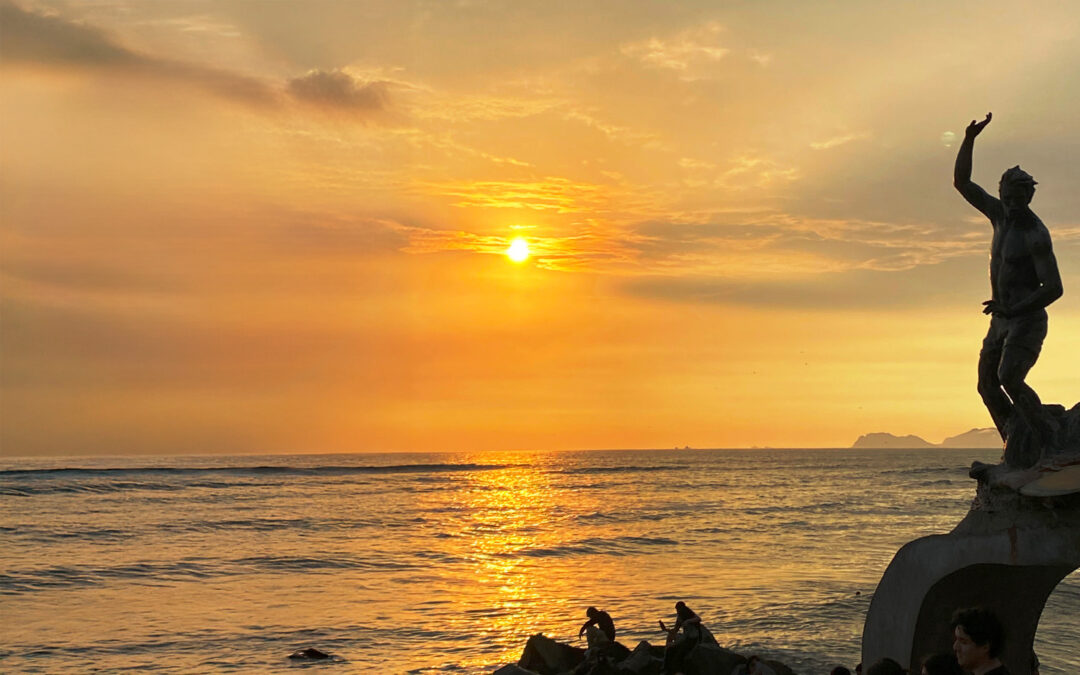
It was a beautiful afternoon with perfect weather. Lima’s waterfront was crowded: entire families enjoying the beach, parents and children arriving with their surfboards and equipment, surf schools with their instructors, tourists and vendors of drinks and ice cream to offer to that swarm of potential customers.
We were accompanying a friend from northern Peru who had come to visit us. Marcelo and I were taking him to the most pleasant and attractive spots. On the horizon you could see surfers skilfully riding the high waves of the Pacific Ocean – an ocean which despite its name is anything but peaceful. It was a real spectacle! The sun was preparing for its final scene of the day casting an exclusive backdrop of fiery orange and red across the sky.
In this beautiful setting, accessible only to a certain social class, everything seemed to be going perfectly. Amidst the crowd, I noticed a tiny, man as thin as a stick carrying four large sacks of waste material that he had collected: cardboard, plastic bottles, glass… This small figure, completely invisible in that environment, was preparing to climb a long flight of stairs, leading to the overpass that crossed the highway from one side to the other, from the beach to the road. He looked like an invisible ant burdened with a load three times his weight.
In that faceless crowd, his presence caught my attention. “Come, sit beside me for a while,” I said, pointing to the empty seat on the bench where I was sitting. He looked at with surprised, then smiled. He set down his heavy sacks and took a seat. “Hi, my name is Gustavo, and you?”. “Arthur,” he replied with a wide, toothless grin.
He explained that he had come from far away and that he needed to cross the highway, climbing up the steep staircase, to get the bus that would take him home. There, in his humble neighborhood, he would sell the waste material he had collected. This was his daily job which enabled him and his family to survive.
Marcelo gave him 5 Soles, the price of the bus ticket. We said goodbye shaking his sweaty hand warmly and wishing him good luck. As he climbed the stairs with his bags in his hand, every so often he looked back at us and flashed us his toothless smile.
In the midst of the faceless crowd, Arthur became the most important person, the one who touched our hearts, who stirred something deep within us, who connected us with the Beatitudes, to the way God sees.
Gustavo E. Clariá
Lighten the burden of others
Be in tune with God’s voice
Understand those who are next to us
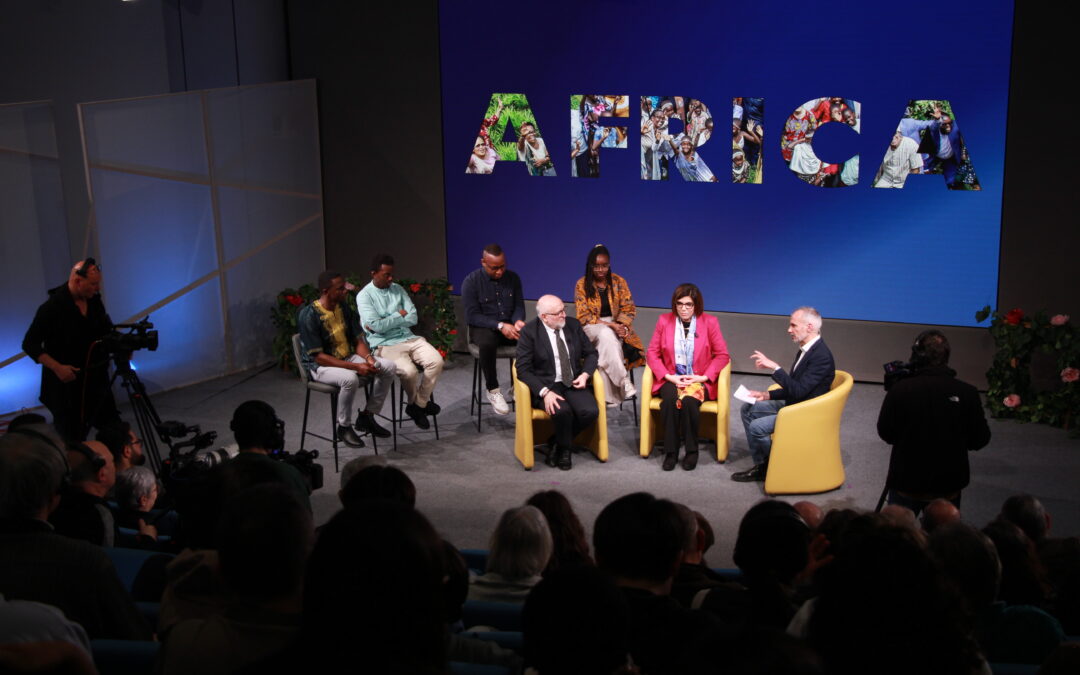
The African continent is made up of 54 States. It is crossed by the Equator and the tropics of Cancer and Capricorn, so much of the territory is located in the torrid zone and is characterized by deserts, savannahs and rainforests. It is the continent with the largest area affected by arid and warm climate. Thirty million km² with about one thousand four hundred million inhabitants.
Jesús Morán, Co-President of the Focolare Movement, accompanied by some members of the International Centre, visited some countries in the east and west of the continent from 13th January-9th February 2025. Margaret Karram, President of the Focolare Movement, joined live via video link on nine occasions, especially for the days dedicated to meetings with local communities.
Jesús Morán said, “It is a trip we will remember for a long time.” Margaret Karram added, “This journey which many have called ‘historic’ has remained in our hearts“. Even though I was connected by video, I can still see their faces, their smiles and their commitment. I was deeply moved by the testimony of the communities of the Movement which live the Gospel radically. I think we have a lot to learn from them. ”
The trip included stops in Ivory Coast, Sierra Leone, Kenya, Rwanda and Burundi but many other people from various other African countries participated in many of the meetings.
It is impossible to summarize the intensity and richness of life found in each community. You can see here a part of the Link Up Conference Call of 15th March 2025 which included a report on this journey which was truly an immersion in the life and culture of the African continent.
Here I am!
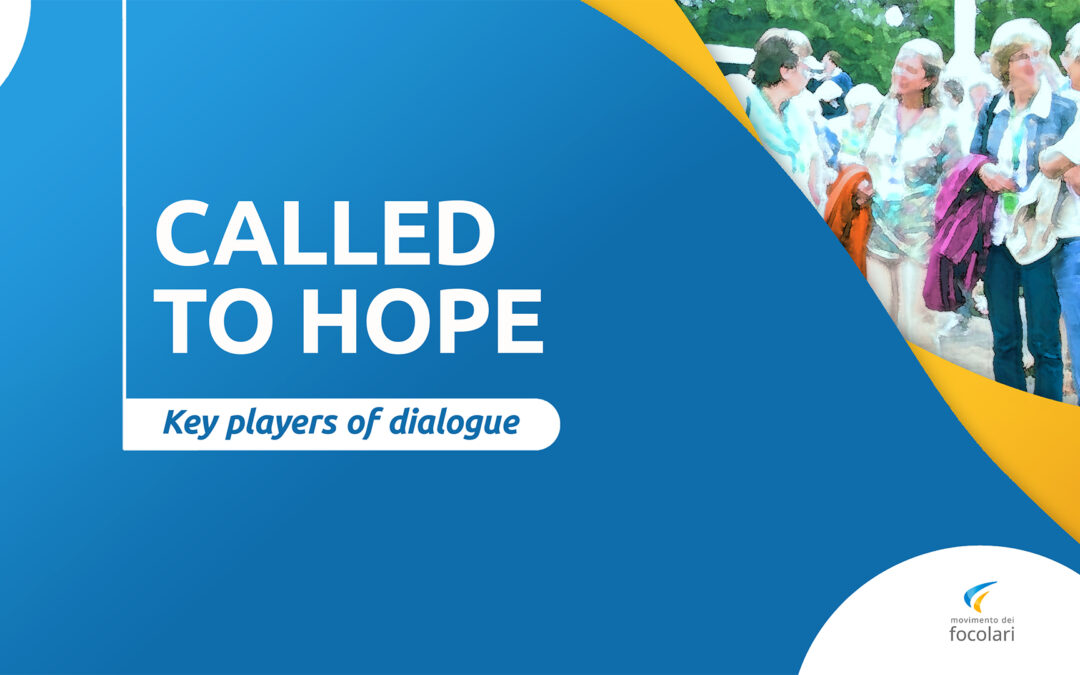
The ecumenical conference Called to hope – Key players of dialogue, will take place from the 26th to the 29th of March 2025 at the Mariapolis Centre of Castel Gandolfo (Italy). It is promoted by “Centro Uno”, the Focolare Movement’s international secretariat for Christian unity. There will be more than 250 faithful of 20 Christian Churches participating in person, coming from over 40 countries of 4 continents, including the Philippines, Serbia, Bulgaria, Slovakia, Ireland, Venezuela, United States. There will be 15 translations, and the conference will also be broadcast via streaming.
Thursday, the 27th of March, the group will go to Rome to visit the Basilica of St. Paul Outside the Walls (at 4:00pm). An ecumenical prayer of reconciliation and for peace open to all is planned.
The conference programme will also focus on the three anniversaries that occur this year: in the context of the Jubilee Year “Pilgrims of Hope” of the Catholic Church, we will commemorate the 1,700th anniversary of the Council of Nicaea, the coincidence of the date of the celebration of Easter for all Churches, and the 60th anniversary of the abolition of mutual excommunications between the Church of Rome and the Church of Constantinople.
Among the ecumenical personalities present who will speak: Msgr. Andrea Palmieri, Undersecretary of the Vatican Dicastery for Promoting Christian Unity, Msgr. Derio Olivero, President of the Episcopal Commission for ecumenism and dialogue of the Italian Bishops’ Conference, Prof. Dr. Martin Illert, representative of the World Council of Churches (WCC), Archbishop Khajag Barsamian representative of the Armenian Apostolic Church to the Holy See, Dr. Natasha Klukach, Director of Research and Operations of the Global Christian Forum, Dr. William Wilson, President of the Pentecostal World Fellowship (via video message), Dr. Elisabeth Newman of the Baptist World Alliance, Dr. Margaret Karram and Dr. Jesús Morán, President and Co-president of the Focolare Movement.
Why is it urgent to work for ecumenism?
In this time of divisions and great challenges – wars, the increase in refugees around the world, unequal distribution of wealth, almost irreversible damage to the earth’s ecosystem – as Christians, we are called together to bear witness to the hope of the Gospel and to be protagonists of dialogue and unity, committing ourselves to live together for peace, to build fraternity, to spread hope. Christian unity is instrumental in bringing peace wherever it is lacking.
Stefania Tanesini
Know how to be amazed!
Train yourself to love
Don’t be discouraged by mistakes
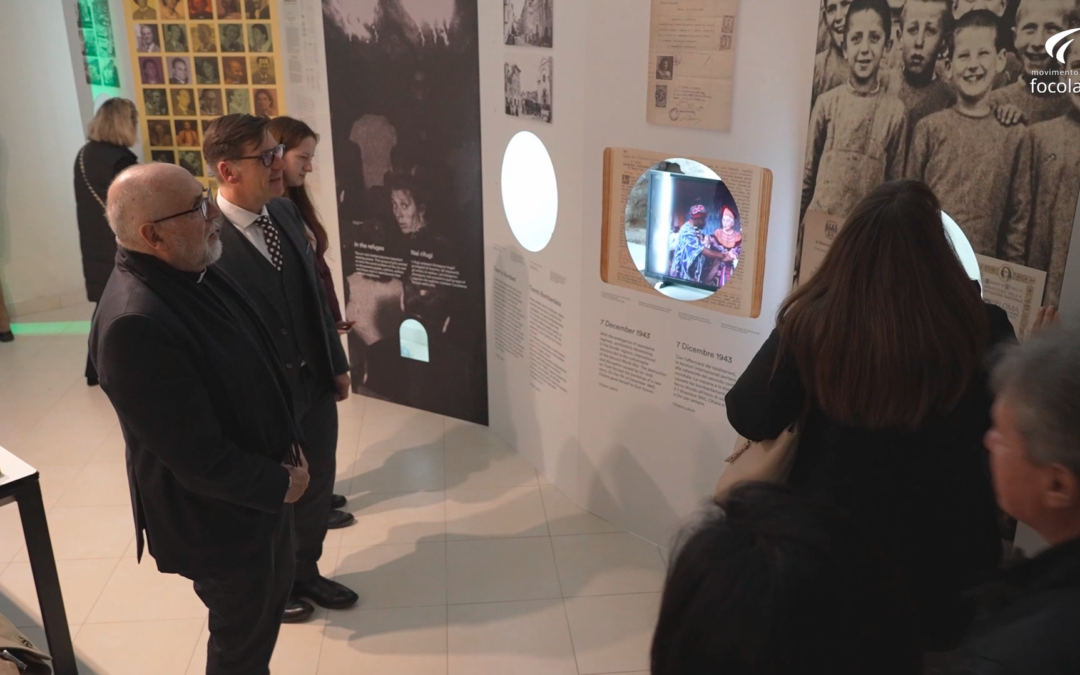
Enable subtitles and select your preferred language.
Start again!
Don’t stop at appearances
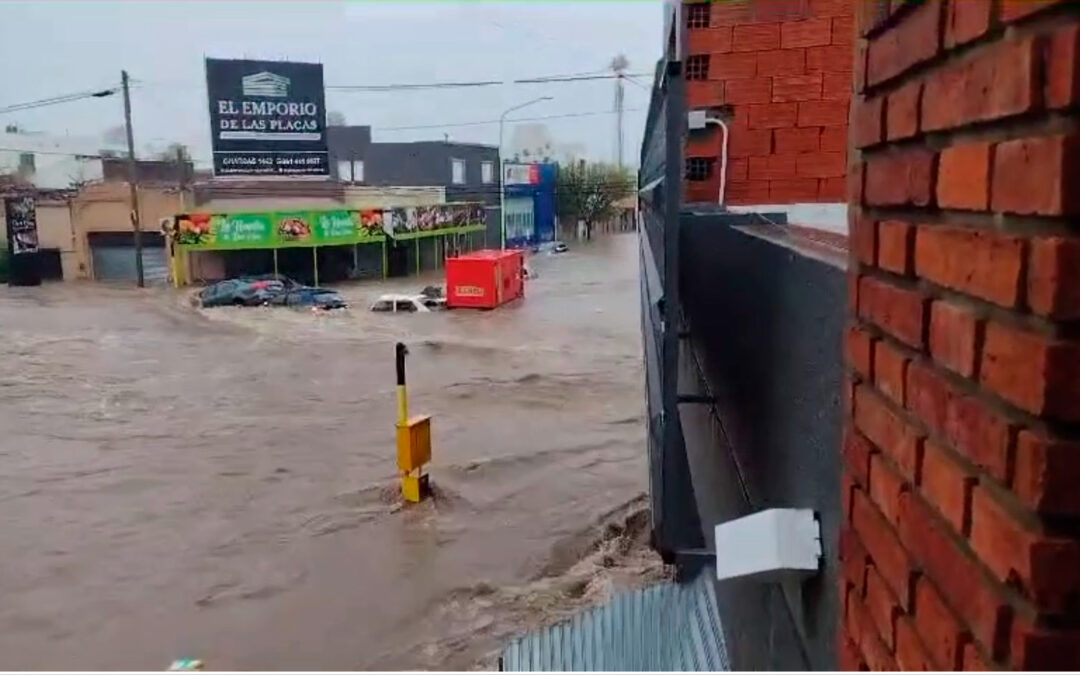
Bahía Blanca is a coastal city located at the gateway to Argentine Patagonia begins. With its 370,000 inhabitants, it is the economic, religious and cultural centre of a vast region. Just a few kilometres away, another 80,000 people live in the city of Punta Alta. Together, they have a very important petrochemical hub, a network of 7 different ports (including multipurpose, grain, fruit, fishing, gas, oil and fertilizers) and the main base of the Argentine Navy.
In this region, the average rainfall in a year is 650 mm, but on Friday, 7th March, 2025, 400 mm fell in just 7 hours. As this huge amount of water made its way to the sea, it gathered speed and destroyed everything in its path: bridges, canals, railways, roads, roads, vehicles, houses, shops… and people.
The population suddenly found itself in scene of unimaginable devastation, as if there had been a tsunami. A sudden power outage also cut off telephone communications, leaving everyone in the dark about the well-being of their relatives, friends, and colleagues.
However, something deep within this community awoke and all the universal laws converged into a single verb: to serve.
As soon as the water and mud allowed, thousands of people began to pour into the streets. Everyone assessed the damage in their own home, but then immediately turned their attention to their neighbours, to see if they needed help. Those who managed to get their situation under control devoted themselves entirely to helping others. We were all witnesses and protagonists of a gigantic miracle that has multiplied, with incredible creativity and strength.
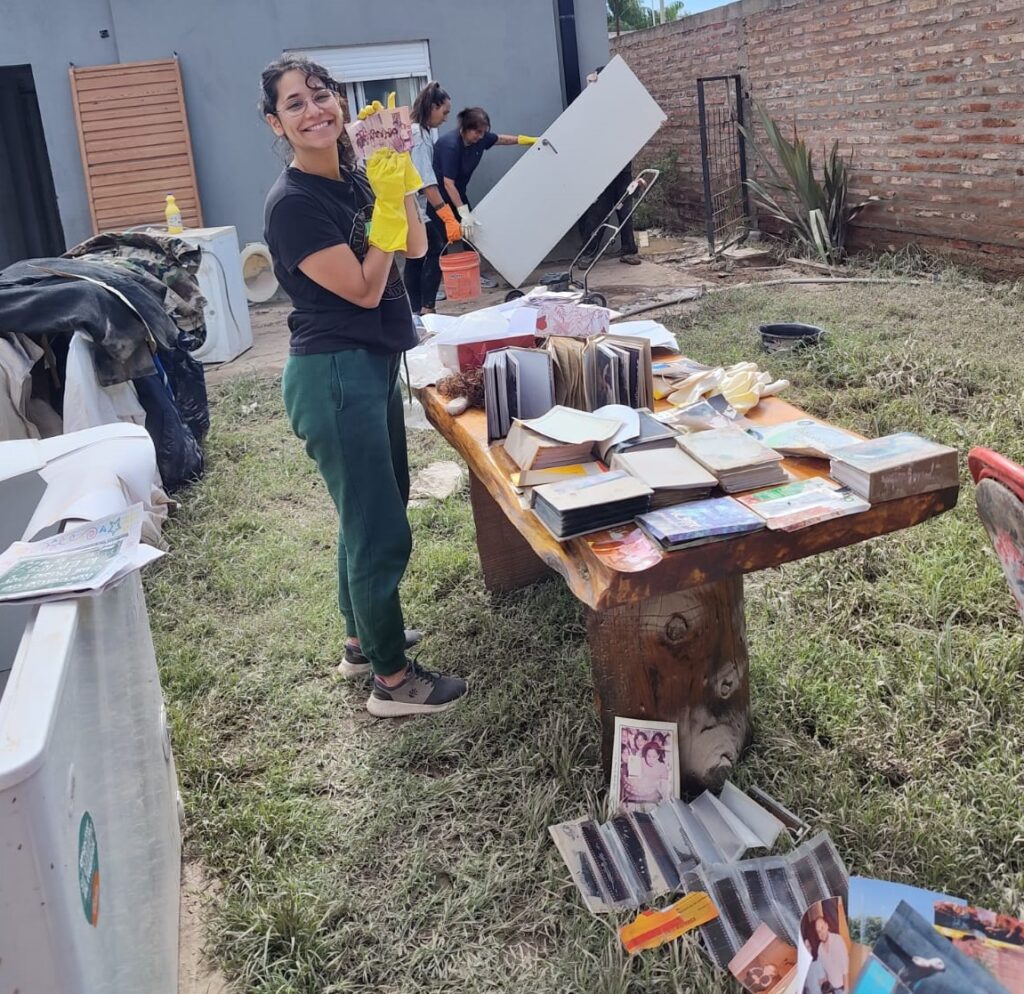
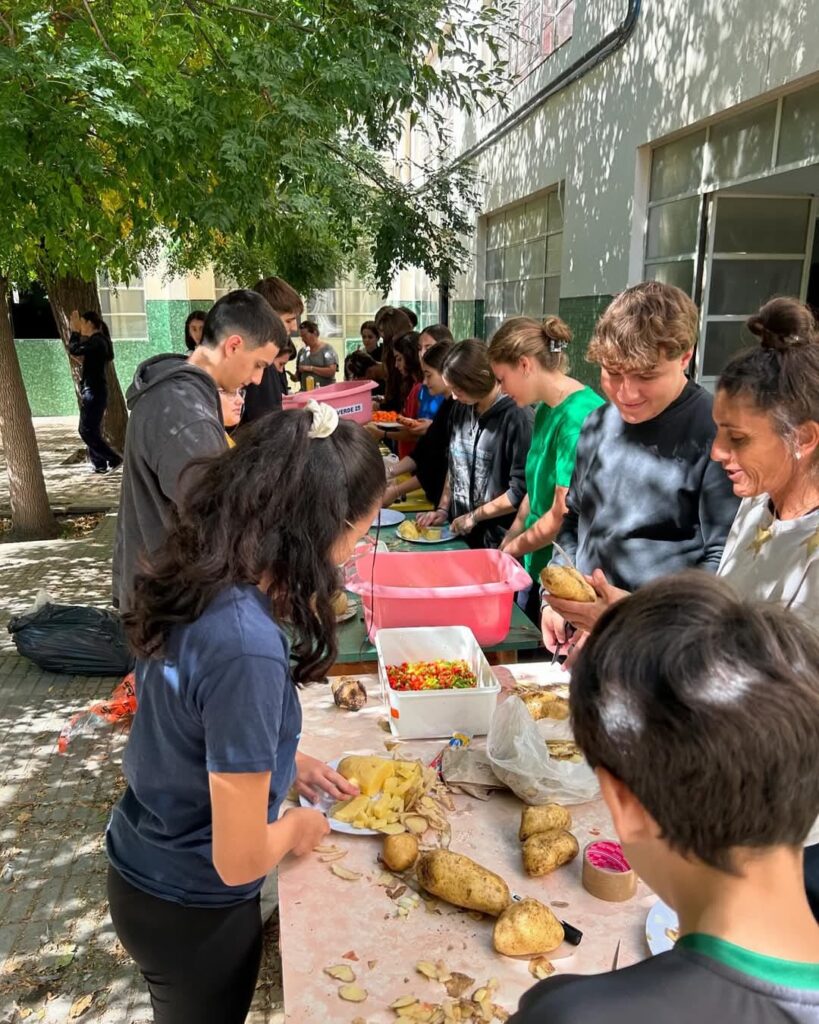
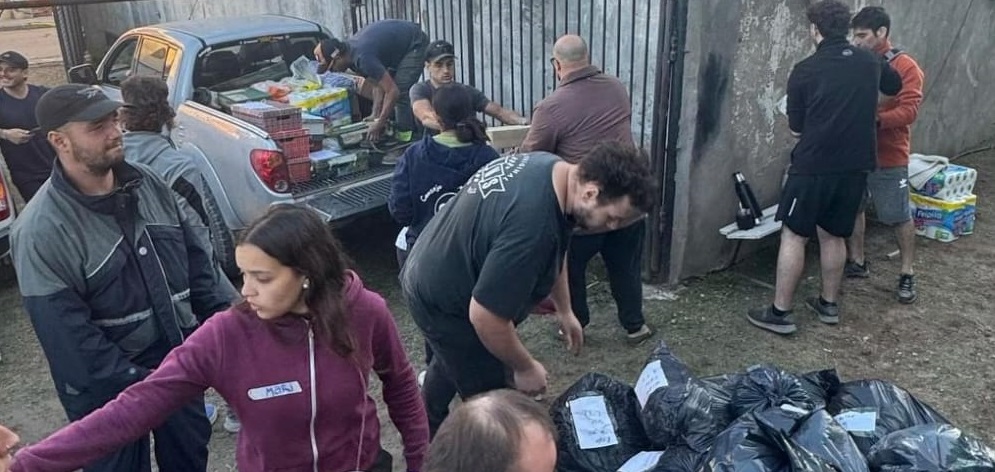
The only thing that mattered was what could be done with our hands: help remove water and mud from homes, clean, tidy up, look for rags, buckets of water, disinfectant, take the injured to health centres, take care of pets, accommodate people who had lost everything, offer strength, encourage, hug, share suffering. No one complained but said, “It was very difficult for me, but in comparison to what happened to others…”
While I was helping some friends, a couple approached and distributed pasties, others came with drinks. Those who had an electricity generator offered to recharge mobile phone batteries. Others provided pumps to drain flooded areas. An optician donated glasses to those who had lost theirs. A woman distributed disinfectant, a doctor made house calls, a man offered his services as a bricklayer and another as a mechanic. Everything was shared: candles, food, clothes, nappies, mattresses, drinking water, brushes and hands – countless hands.
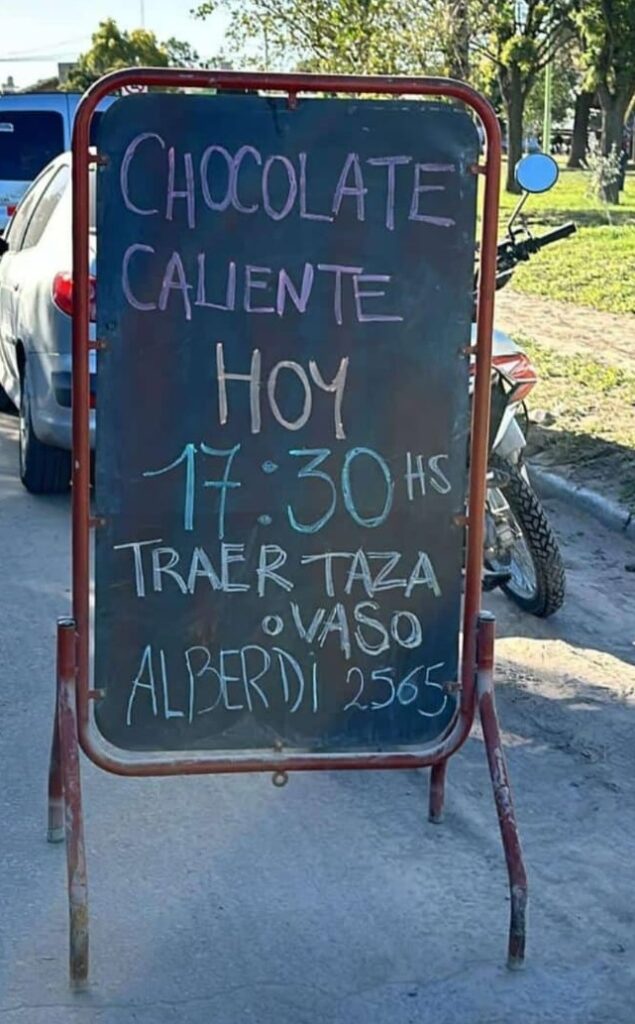
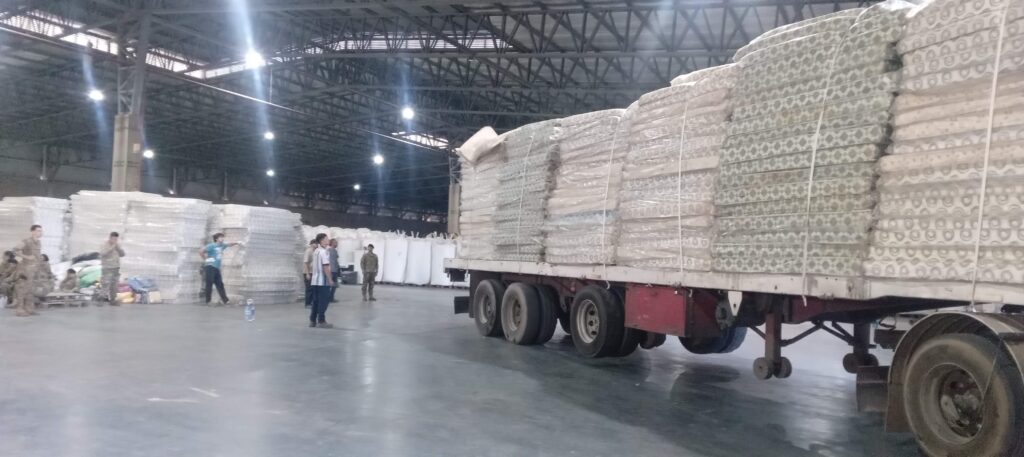
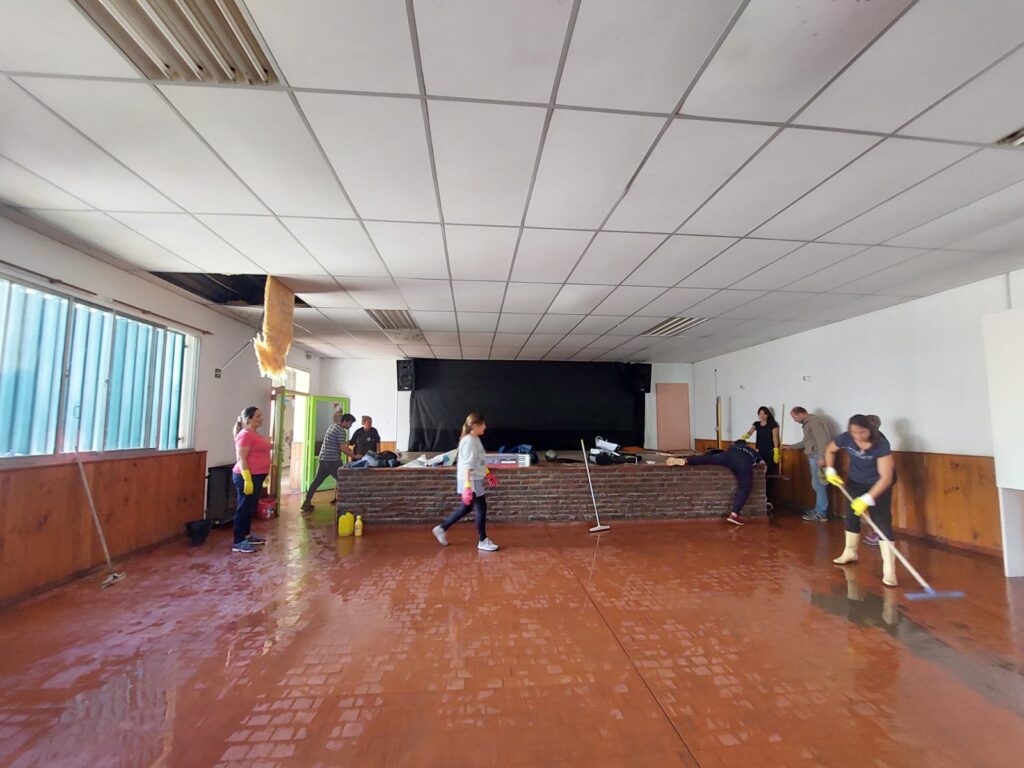
And then came the solidarity of the whole country and of people from all over the world. By truck, by train, by bus, in vans… tons of donations, which needed more volunteers for loading, unloading, sorting and delivery. Volunteers kept multiplying. And also money, donated with great generosity. Parishes, clubs, schools, companies, all the existing organizations gave everything they could. Generous financial donations also arrived. Parishes, clubs, schools, businesses—every organization gave everything they could. And then, another kind of organization emerged: groups of friends. Like makeshift “patrols,” each group took charge of a section of the city where government aid would likely take longer to arrive. Even now, they continue going door to door, recording every need and ensuring that help arrives swiftly.
All the hands of these people, whether they knew it, believed it, or even imagined it, have become “divine hands”. Because they were the most tangible way God could reach those in need. Personally, I experienced deep anxiety not knowing if my siblings or friends were safe. I wanted to reach them, but it was impossible. So I decided to help wherever I could. I called it my “square metre.” Later, I finally managed to reach my loved ones, only to discover that others, strangers, had helped them where I could not.
Days later, some parts of the city are still under. The suffering and difficulties continue. The losses have been immense. Everywhere you meet people with big dark circles under their eyes and aching muscles from working almost without rest. But with their hearts wide open and a fullness in their eyes, for having given everything for others.
Juan Del Santo (Bahía Blanca, Argentina)
Photo: © Focolari Bahia Blanca
Those who give, receive!
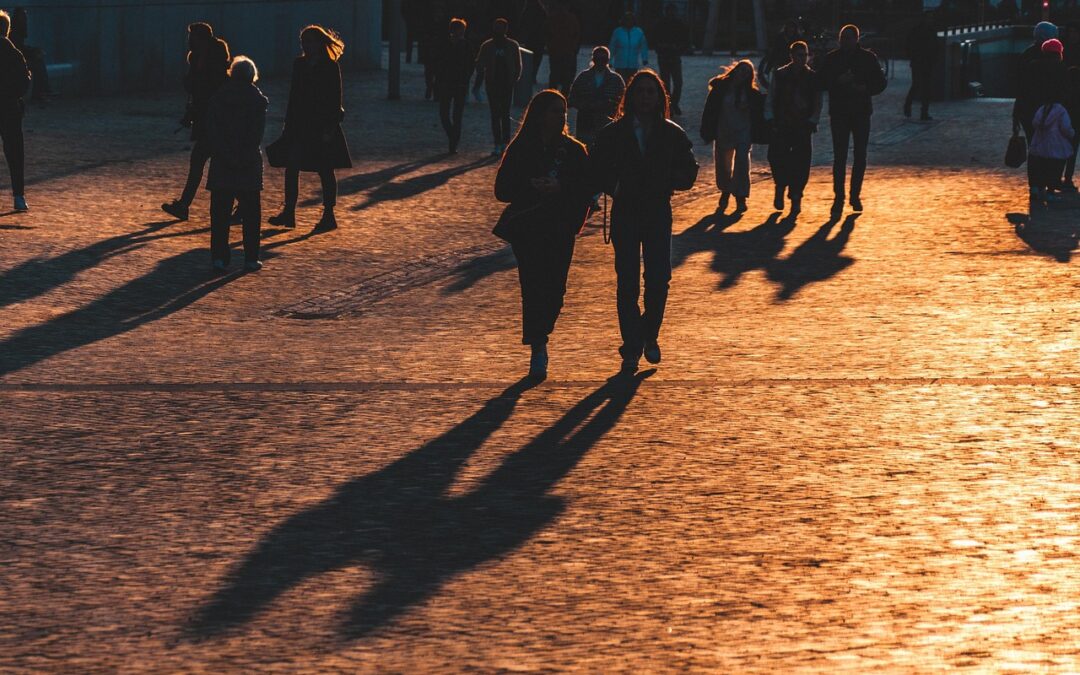
With what eyes do we look at the world and our fellow travellers in the adventure of life? It is a question of vital importance, in an era like ours marked by polarisation and disagreements, loneliness and distances between the haves and the have-nots, without forgetting the increasingly pervasive presence of artificial intelligence. Yet, at the same time, the thirst for harmony and truth grows.
Chiara Lubich used to say that everything depends on which “eyes” we look at people with. If we look with the eyes of the heart, which are the eyes of Love, we will not stop at appearances, we will instead grasp the deeper reality that is hidden in every human being. And from the gaze of the heart proceeds action, the quality of the relationship, becoming close, being near to the other person. (1)
In 1961 Chiara wrote:
If you enter the Gospel … you’ll immediately find yourself on the mountain ridge. Therefore, already at the top, already in God, even though looking over the side you’ll see that the mountain is not one mountain but a mountain chain and that for you, life is to walk along the crest up to the end.
Every Word of God contains both the minimum and the maximum that he can ask of you, so when you read, “Love your neighbour as yourself” (Mt 19:19), you have the law of fraternal love at its highest degree.
Your neighbour is another you, and you must love him or her bearing that in mind. When neighbours cry, you must cry with them, and when they laugh, laugh with them. If they lack knowledge, be ignorant with them. If they have lost a parent, make their suffering your own. …
What has value for you is God who is both their Father and yours. Don’t make excuses for love. Your neighbours are those who pass next to you, be they rich or poor, beautiful or ugly, brilliant or uneducated, holy or sinful, a fellow citizen or a foreigner, a priest or a layperson, whoever.
Try to love whoever passes next to you in the present moment of your life. You will discover within yourself a new energy and strength you did not know you had. They will add flavour to your life, and you will find answers to your thousand whys. (2)
Chiara Lubich
Watch the video
Be conscious of God’s love for me
Be close to those in need
Hope in God
Be discerning
Be the first to love
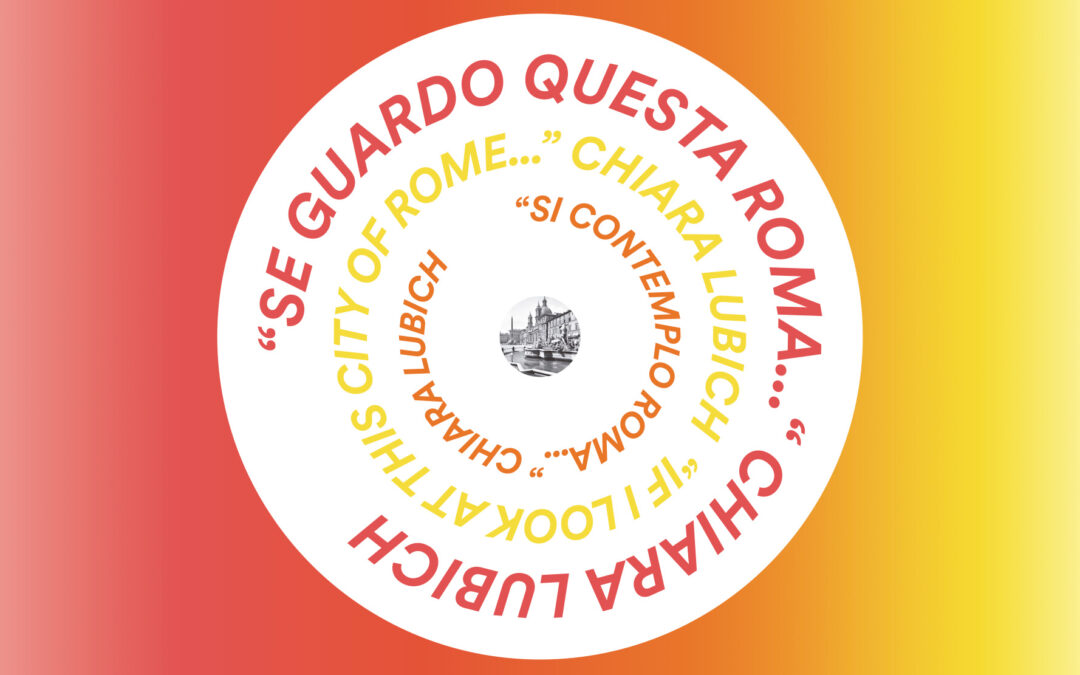
An exhibition dedicated to Chiara Lubich (1920-2008), witness and inspirer of the universal value of fraternity. A stop for those visiting Rome in this Jubilee year; at the centre of the exhibition is the theme of the “city”, as a privileged place for building fraternal relationships, open to the world. The multimedia exhibition has been produced by the Chiara Lubich Centre and the Historical Museum Foundation of Trentino.
On Saturday, 15th March, 2025, starting at 6:30 PM, the inaugural event of the exhibition will take place with an artistic moment inspired by the fiction film “Chiara Lubich – Love Conquers All” (directed by Giacomo Campiotti). Pianist Carmine Padula will perform the pieces he composed for the film’s soundtrack. This will be followed by theatrical readings of some of Chiara Lubich’s texts and then a dialogue on some extracts of the film, with Saverio d’Ercole, creative producer of Eliseo Entertainment.
On the afternoon of Sunday, 16th March, 2025, there will be a moment dedicated to young people, based on Chiara Lubich’s text from October 1949, “The Resurrection of Rome.” This will be followed by a piano concert offered by Paolo Vergari.
From 15th March, 2025 until 31st January, 2026, the exhibition will be open from 10:00 AM to 5:00 PM, on Tuesday to Sunday. Bookings can be made up to 8:00 PM at the Focolare Meeting Point (Via del Carmine, 3 – Rome).
Young guides will be available upon request to accompany visitors.
Don’t stop at someone’s defects
Be patient
See others with a look of love
See others in a new light
Support the weak
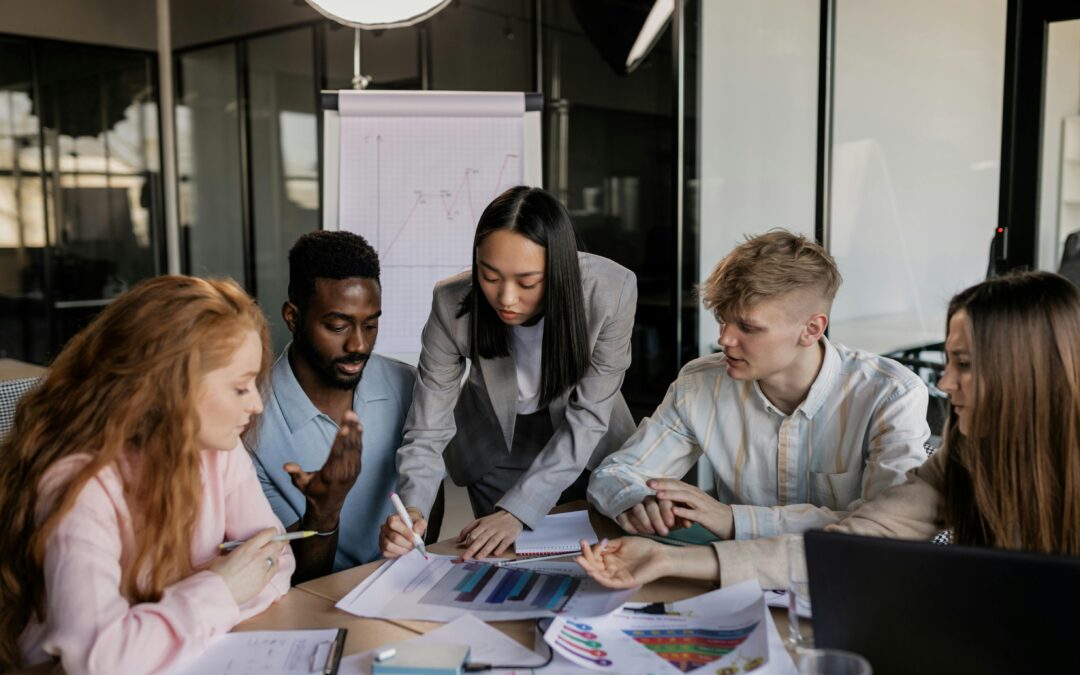
The Political Movement for Unity and the NGO New Humanity, both expressions of the Focolare Movement, supported by Porticus, are promoting a global political project entitled “One Humanity, One Planet: Synodal Leadership”. Aimed at young people aged 18-40 with experience in political representation, government leadership or social movements, the programme offers academic training, personalised mentoring and a hackathon in Rome with international experts.
Objective: to strengthen the participation of young politicians in global advocacy processes, through a collaborative journey of reflection and action between socio-political leaders, generating a global network of young leaders from different continents. The challenge is to overcome the current crises (social, environmental, political and economic) and contribute to building a leadership network for the development of international political strategies.
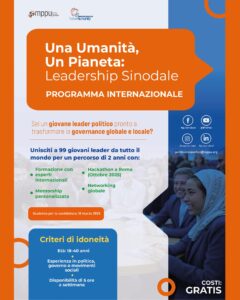
The program will start at the end of April 2025, the deadline for submitting applications is 31st March, it will last for two years and is fully funded (free of charge). It will include contributions from prestigious academic institutions and international NGOs. The format will be mixed, both in person and online through interactive modules with experts from around the world, including renowned political leaders and university professors. A week-long event is planned in Rome, from 6th-12th October 2025, with international guests to co-create proposals for collaborative actions at a global level to solve current social, environmental and economic challenges.
Language will not be an obstacle. Simultaneous translations will be available in Spanish, Portuguese, French, English, Italian and other languages as required.
What does the programme offer?
The initiative is a process of global collective action that integrates training, information, networking, tools and meetings. It offers experiences and methods to increase the quality of policy and improve its impact on social transformation. Participants will have access to learning spaces, collective knowledge-building and exchange with international scholars and experts, with spaces for reflection among the participants alongside dedicated discussion sessions. Each young participant will receive ongoing mentorship from an experiences political leader to refine their political, social, economic and environmental project. In the second year, participants will join a global network of 600 young leaders from different continents.
At the end of the program, participants will receive a formal diploma certifying their participation in the program.
For more information click here or contact politicalinnovation@mppu.org
Stay updated via Instagram, Facebook, LinkedIn mppu_international
Lorenzo Russo
Photo: © Pexels
Encourage the fearful
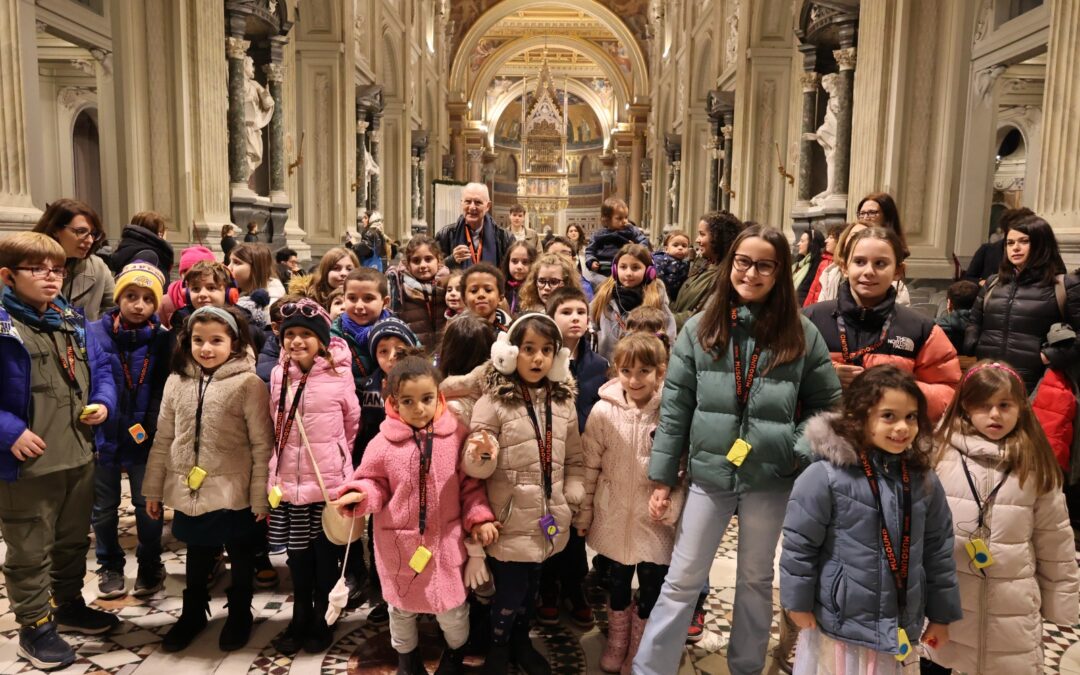
In this year dedicated to the Jubilee of Hope, the Gen 4 (the children of the Focolare Movement) in Rome decided to embark on a journey to discover more about the history of Christianity and understand how to live the Jubilee in their city that is welcoming millions of pilgrims from all over the world. The stages of their journey are the Vatican Basilicas in Rome: St. Peter’s, St. John Lateran, St. Paul’s Outside the Walls and St. Mary Major. They asked Father Fabio Ciardi, OMI, professor of spiritual theology and author of numerous books and publications, to be their guide.
First stop: St. Peter’s Basilica
In October 2024, two months before the Jubilee began, the group of 33 children with as many adults, learned about a very special reality before entering St. Peter’s Basilica. It is located next to the residence where Pope Francis lives. It is the Dispensary of St. Martha, a place where the Gospel becomes incarnate every day through the assistance given to hundreds of mothers and children. It’s an opportunity to explain to the Gen 4 how the Jubilee can be lived concretely by helping others.
Father Fabio explained, “It is a real family clinic, which began this work of care for poor children and their families in 1922. Today over 400 children, with their mothers, are assisted free of charge by about sixty volunteer doctors. They are mostly people without a residence permit, without health care”. Services include gynaecological and paediatric examinations as well as dental care for the homeless.
Father Fabio then linked this story with the story of Saint Peter, using some drawings. The children listened attentively to his voice through headphones: “Jesus met Simon the fisherman and invited him to follow him. ‘Come with me,’ he said, ‘I’ll make you a fisher of men.’ And he gave him a new name, he called him Peter, which means “rock”, because he wanted to build his Church on him”. And as the story continued, we moved to the Basilica to pray at the tomb of St. Peter. “Peter came to Rome. When Nero set fire to the city he blamed the Christians. Peter was killed in the circus of the emperor Caligula that Nero had renovated…and finally the tomb of Saint Peter in his Basilica”. There was an atmosphere of deep recollection among Gen 4, despite the influx of tourists on that Roman Saturday afternoon. Going towards the Holy Door you pass some masterpieces of art. In front of the Pietà, Father Fabio said, “This statue of Our Lady was very dear to Chiara Lubich. Every time she came to the Basilica she stopped here to pray to Mary”.
The stop in San Giovanni in Laterano
The second stage was in January 2025. This time the group was larger: 140 people including 60 children, always under the expert guidance of Father Fabio, met to discover the Basilica of St. John Lateran, full of surprises and treasures related to the history of Christianity. Attentive and curious, with headphones in their ears, for just over two hours Gen4 listened to Father Fabio’s fascinating story.
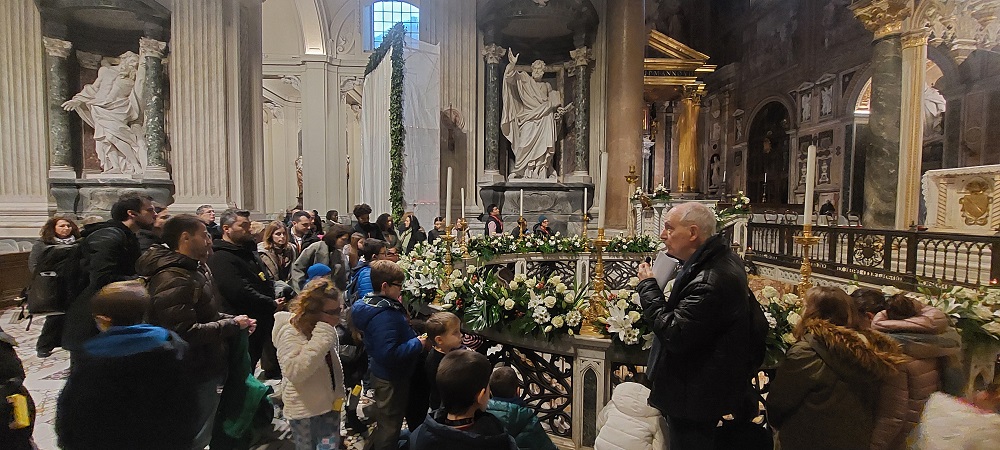
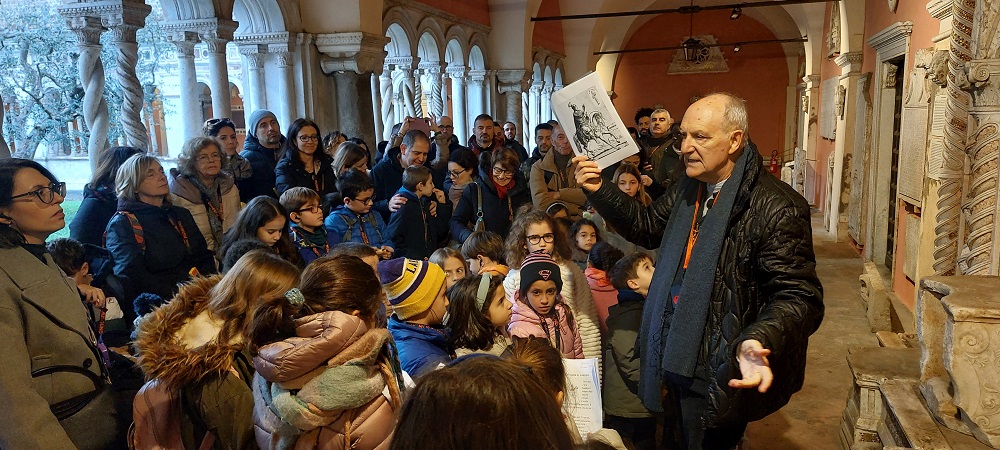
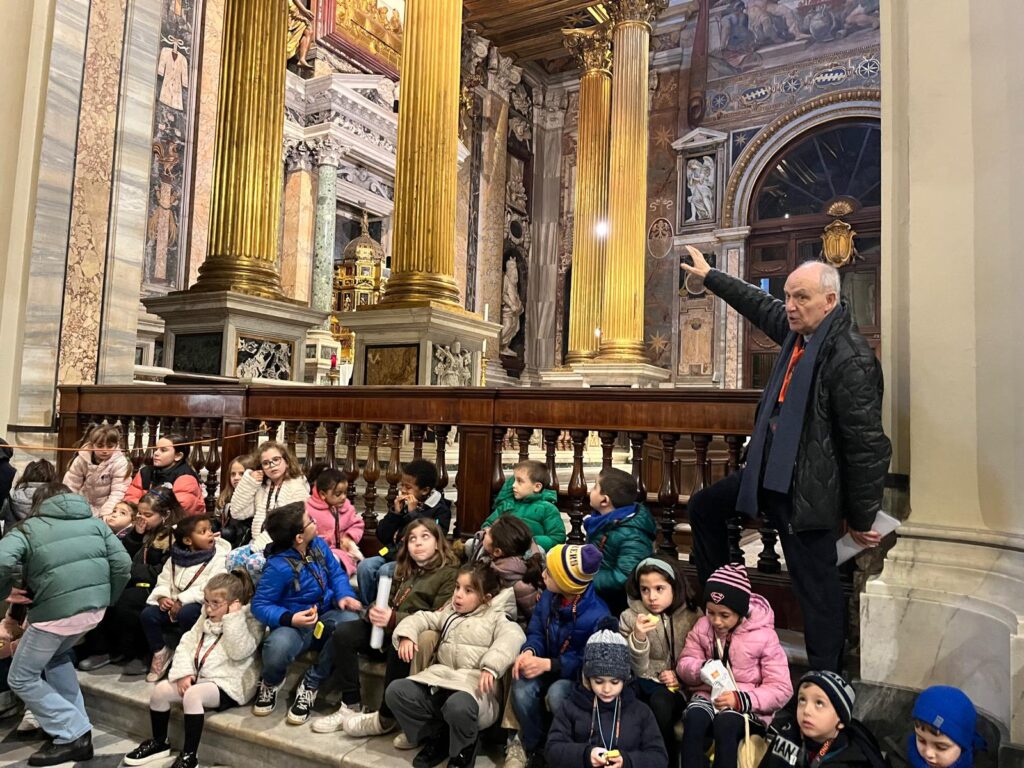
In his blog, Father Fabio wrote, “It was wonderful to tell the story of the obelisk, it was nice to explain the meaning of the cloister, it was nice to tell the stories of St. John the Baptist and St. John the Evangelist and to let the children go and find their statues in the Basilica. It was nice to show the ancient Papal throne and the current one, on which the Pope e sits to take possession of his office. It was nice to point out the relics of the table on which Jesus celebrated the last supper and the one on which Peter celebrated here in Rome. It was good to go through the Holy Door together…It’s good to be with the children and tell them beautiful things…”
At this point, the children have built a special bond with Father Fabio. They walked beside him in the Basilica, held his hand, asked him questions to learn more. A Gen 4 asked, “What’s Heaven like?” He replied, “Imagine a busy school day. When it’s over, you go home to a beautiful, welcoming, warm house, where your parents, grandparents and friends shower you with love. You feel happy in that moment, don’t you? It’s like that in Heaven: it’s a place where you feel good, where you feel at home!” This stage also came to an end. We returned home happy and aware that for us, the Jubilee must be a time to give hope and happiness to the most disadvantaged, to our poor, to those who suffer.
The journey with other generations
Waiting to continue this journey with the Gen 4, the Gen3 (40 teenagers), the Gen2 (30 young people) and a group of adults, fascinated by the positive experience that the children were living with Father Fabio, also wanted to follow the same journey, always guided by him.
Father Fabio wrote in his blog, “First the children, then the teens, then the young people and adults. St. John Lateran, St. Peter, St. Paul and St. Mary Major. So I keep living the Jubilee, over and over. The story of history, art and spirituality, because it is all intertwined, human and divine, past and present. These monuments live on, still speaking after hundreds of years and continue to narrate beautiful things”.
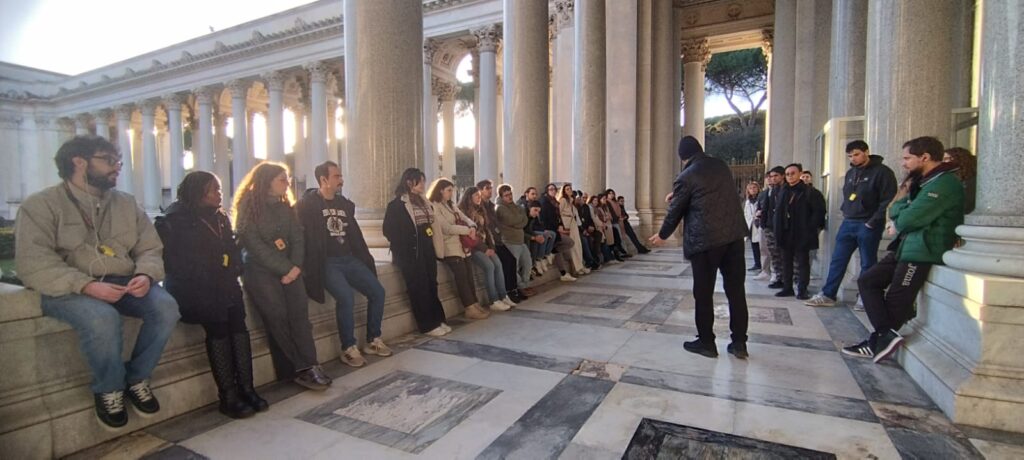
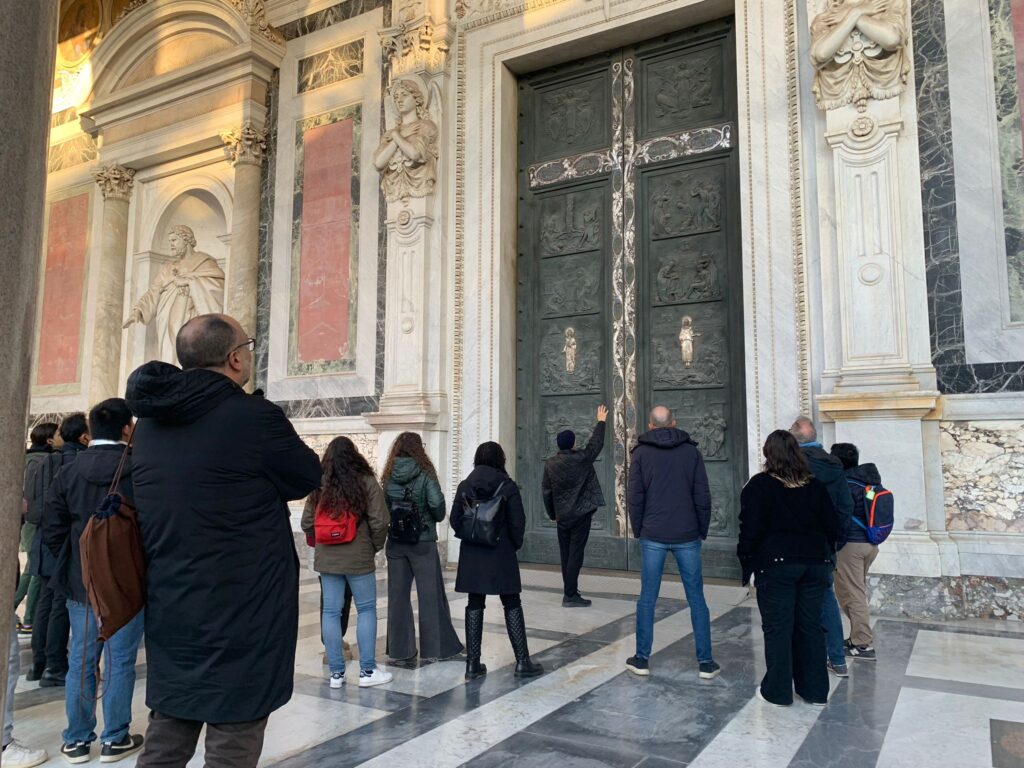
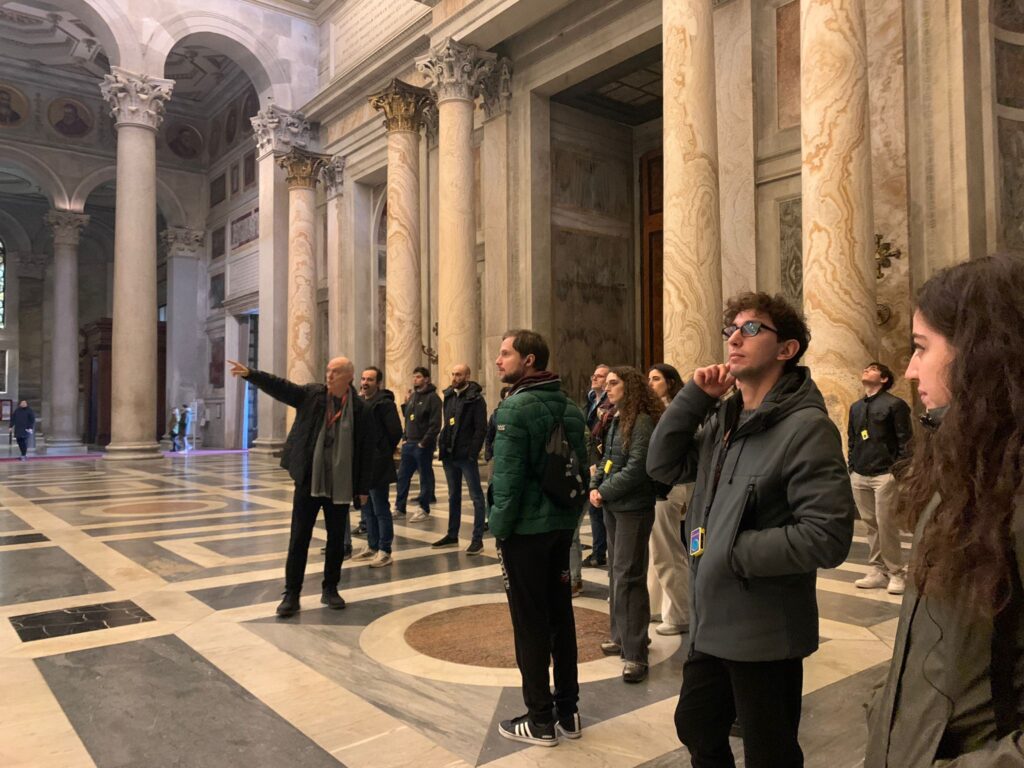
And the young people thanked Father Fabio “for preparing our hearts for such a beautiful experience, you helped us to go through this stage of the holy year together, with meaning and joy. We really liked the atmosphere you managed to create, arousing in us the desire to visit together other places in Rome which were important for the first Christians and you gave us the desire to deepen the meaning of being pilgrims on the way to the goal of Paradise”.
Lorenzo Russo
Help each other to keep on loving
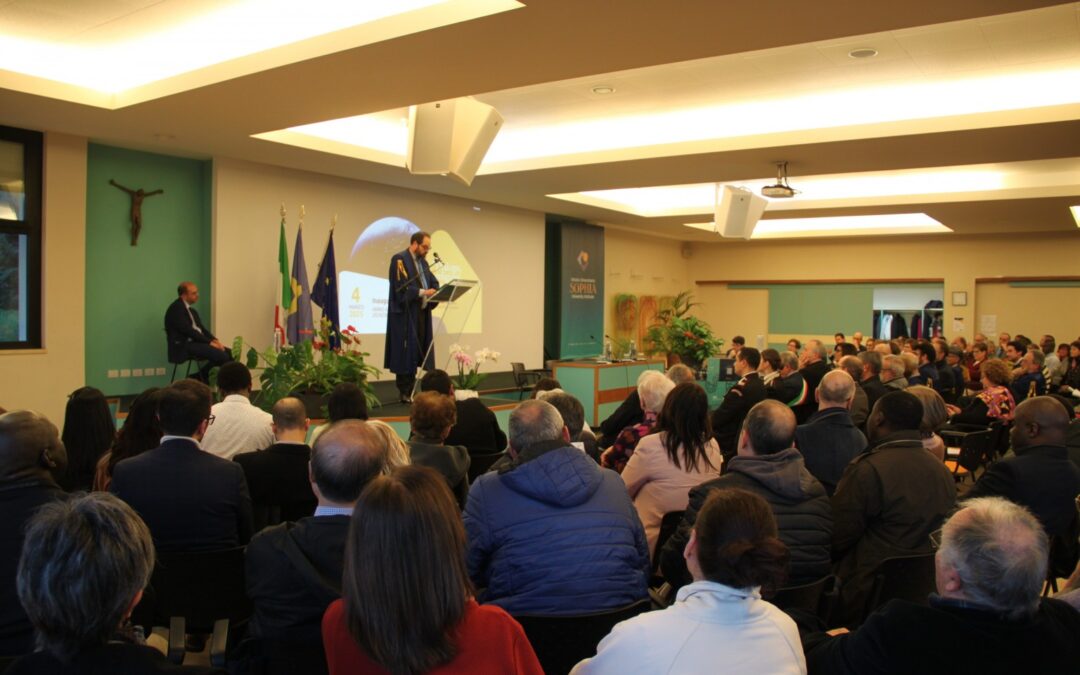
On Tuesday 4th March, the 17th academic year of the’Sophia University Institute in Loppiano (Figline and Incisa Valdarno – Florence) was inaugurated. The ceremony took place in the main hall of the Institute, in the presence of the entire academic community and a representation of the rich network of relationships and collaborations that the Sophia University Institute has been able to weave with institutions, other universities and third sector organisations in these first 17 years of its existence.
The following people took part: the Rector, Declan O’Byrne; the Chancellor of the Institute, Gherardo Gambelli, Archbishop of Florence; the Vice-Chancellor, Dr Margaret Karram, President of the Focolare Movement; the Bishop of Fiesole, Stefano Manetti; the mayor of Figline and Incisa Valdarno, Valerio Pianigiani; Paolo Cancelli, director of the Development Office of the Pontifical University Antonianum; Marco Salvatori, President of the Giorgio La Pira International Student Centre
The centrepiece of the ceremony was the inaugural lecture entitled ‘Dialogue, religions, geopolitics’ given by Fabio Petito, Professor of International Relations and Director of the Freedom of Religion or Belief & Foreign Policy Initiative at the University of Sussex, as well as Scientific Coordinator of the Religions and International Relations Programme of the Ministry of Foreign Affairs and ISPI (Institute for International Political Studies). Petito emphasised that today, ‘religion seems to be part of, and sometimes at the centre of, the current scenario of instability and international crisis’. However, although this is a less visible phenomenon globally, ‘it cannot be denied that in the last quarter of a century there has been a significant increase in the efforts of representatives of religious communities to respond to violence and political tensions through initiatives of dialogue and interreligious collaboration’. Petito thus emphasised the importance that places like the Sophia University Institute can have in creatively deepening and spreading the culture of encounter and ‘making small seeds of hope and fruits of unity and human fraternity blossom’.
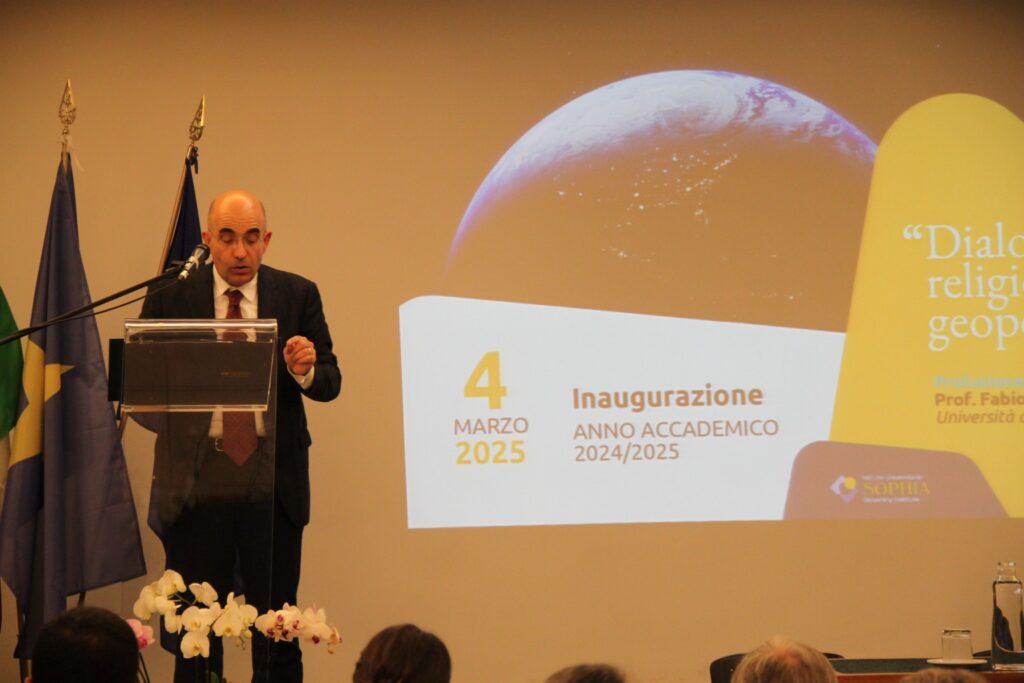
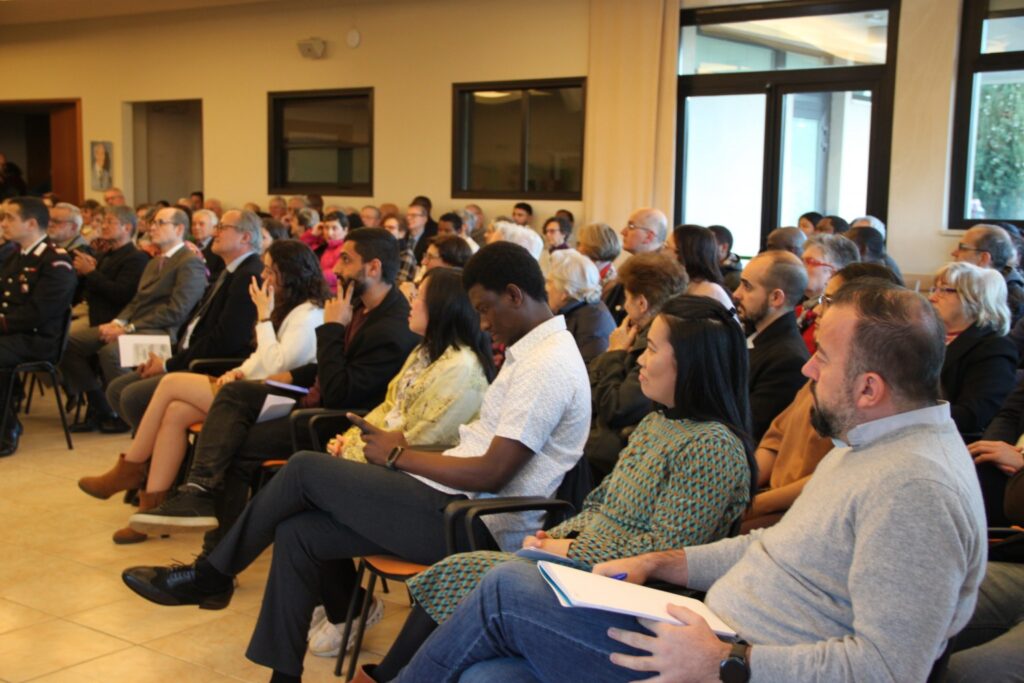
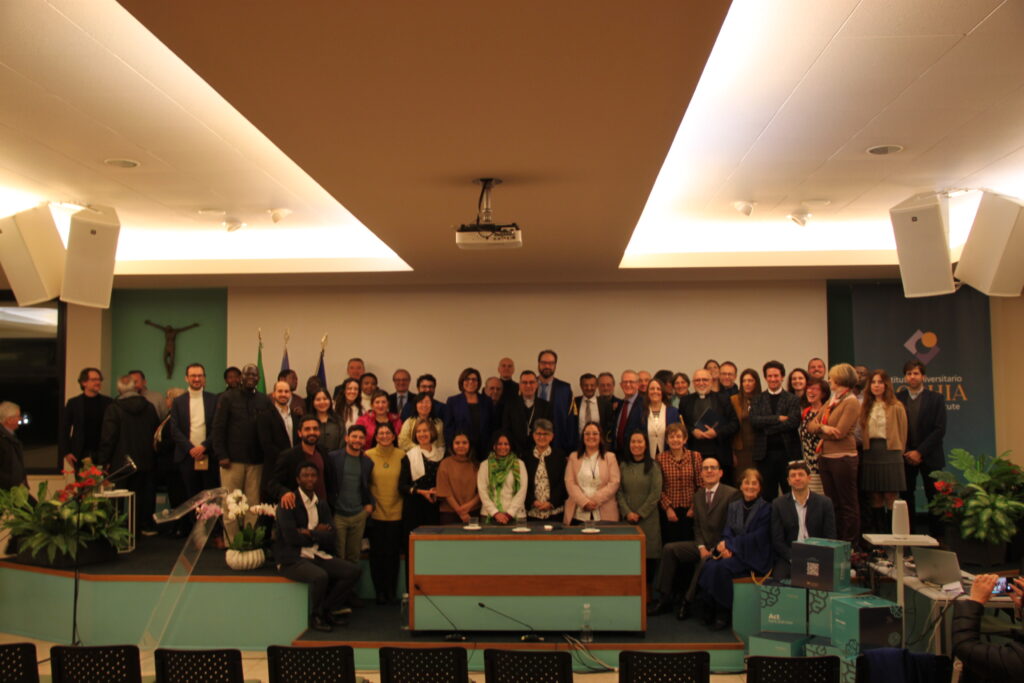
In true Sophia style, an international academic community and a laboratory of life, education, study and research, the inaugural lecture was followed by a dialogue, moderated by the journalist and Vatican expert Andrea Gagliarducci (Eternal Word Television Network and ACI Stampa), which involved the Chancellor Arcbishop Gherardo Gambelli, on his first visit to the Institute, the Vice-Chancellor Dr Margaret Karram and six students from the university.
The dialogue, starting from the personal stories of young people from the Holy Land, the Philippines, Argentina, Kosovo, Sierra Leone and Peru, touched on topics of global importance and burning current affairs: the value of grassroots diplomacy for conflict resolution and the search for peace; the commitment to a more just and equitable economy, with the experience of Economy of Francesco; the role of young people from the Mediterranean in building a culture of encounter; the value
of reconciliation and interreligious dialogue, in particular between Christians and Muslims with the Sophian experience of Wings of Unity; the hopes of young Africans involved in the Together for a New Africa project, for change and the common good of their continent; the concerns and fragility of young people in search of a vocation and fulfilment in a globalised world.
The inauguration of the 2024-25 academic year highlighted, once again, the ability of this still small academic organisation to train young people to face the complexity of today’s world, in a trans-disciplinary perspective, and to work in synergy with specialists from various fields and institutions to promote dialogue between cultures in the concreteness of social life, giving impetus to the inner, intellectual and social growth of people in a dynamic of reciprocity.
Statements
The Grand Chancellor of the Institute, H.E. Mons. Gherardo Gambelli, Archbishop of Florence: “Among the objectives of the Institute is ‘to promote, in the concreteness of social life, dialogue between cultures, fostering the inner, intellectual, and social growth of individuals in a dynamic of reciprocity.’ Several key words emerge from this project: promotion, social life, dialogue, inner, intellectual, and social growth, reciprocity. All these terms point towards personal development, enabling individuals not only to inhabit the ‘we’ of the community they belong to with dignity but also to feel ever more inhabited by that ‘we’ to which they belong. A ‘we’ that does not seek to oppose a hypothetical ‘you’ but is instead capable, every day, of embracing all that appears with the face of the other, the different, the marginalized.”
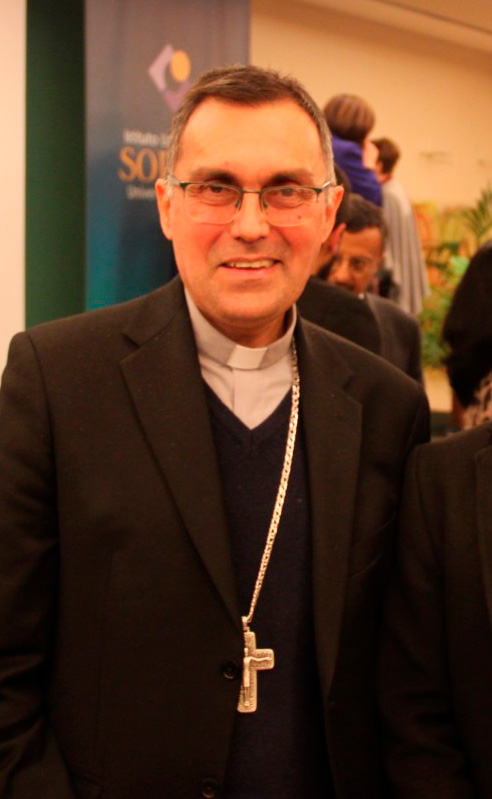

The Vice Grand Chancellor, Dr. Margaret Karram, President of the Focolare Movement: “It is important that in an institution like ours, we emphasize dialogue and the role of religions in today’s global context, where—as we have seen in these past days—individuals and nations risk drowning in a state of confusion and despair. […] The Sophia University Institute, as a ‘home’ for a culture founded on the Gospel, is committed with and in the Church, to offer responses and guidance in the light of the Charism of unity. It is now up to us to move forward with courage and commitment, ensuring that this University Institute is increasingly recognized for its contribution to promoting a culture of unity that contributes to building peace and fraternity among individuals and peoples.”
Declan O’Byrne, Rector of the Sophia University Institute: “Together, as an academic community united by a common ideal, we continue to build Sophia as a beacon of wisdom and unity in the landscape of higher education. May our collective commitment continue to enlighten minds, inspire hearts, and transform society—one step at a time—towards that civilization of love to which we all aspire.”
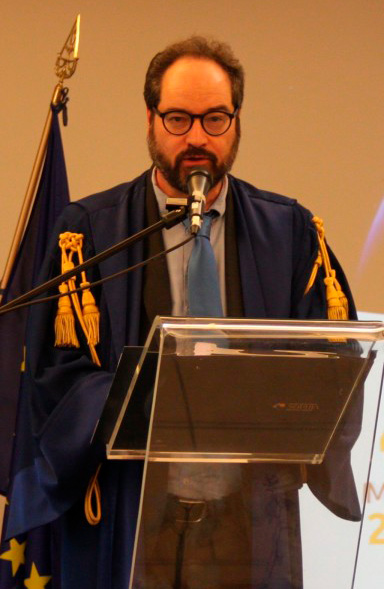
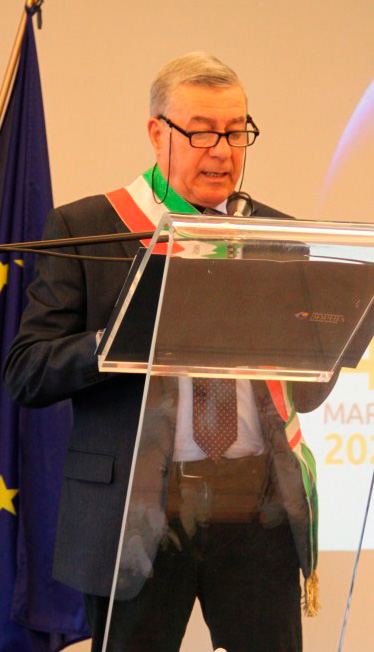
Valerio Pianigiani, Mayor of Figline and Incisa Valdarno: “In the face of divisions and violence that cannot leave us indifferent, knowledge, understanding, tolerance and awareness of the world around us can serve as the antidote to brutality and divisions. A bridge that fosters understanding of the other, with the aim of working together and committing ourselves to the common good. I extend my gratitude to those who work in this Institute with passion and dedication every day, nurturing ever more aware minds here as well, in Figline and Incisa Valdarno—a community that stands firmly by the values of peace, solidarity, and dialogue.”
Stefano Manetti, Bishop of Fiesole: “The commitment to dialogue and communicate with everyone reduces distances, eliminates marginalization and becomes a sign of evangelical hope—something of which we are in great need. I therefore encourage professors and students to continue working for the benefit of the least among us through the gift of relationships, the sharing of cultural themes, and to keep being ‘angels of hope’ for all those you encounter on your path.”
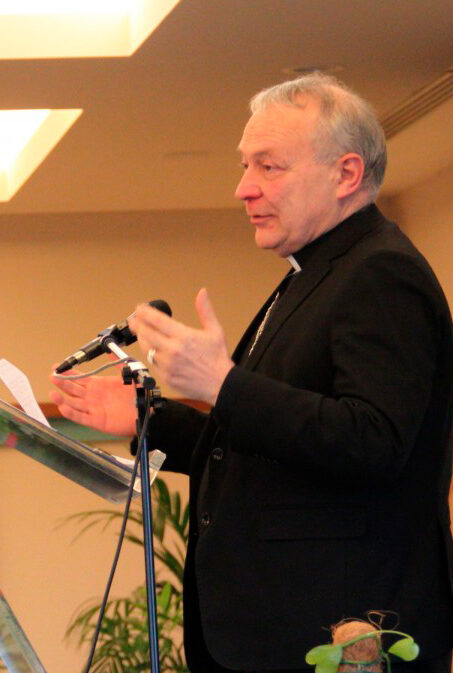
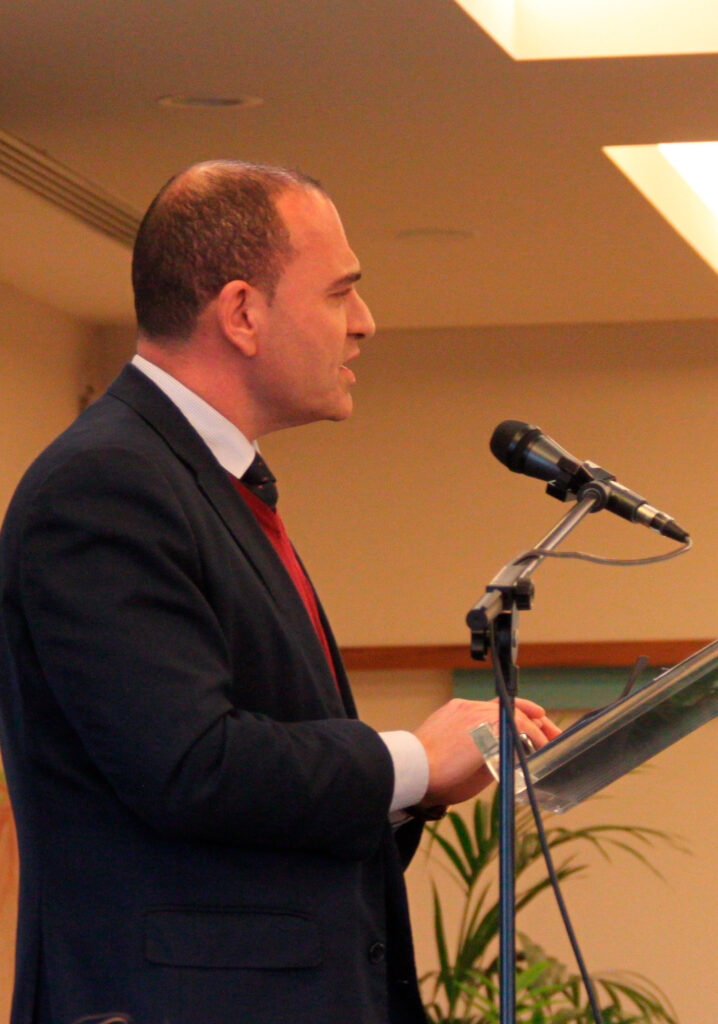
Paolo Cancelli, Director of the Development Office of the Pontifical Antonianum University: “We are convinced that we must work together in the culture of dialogue as a path, in common collaboration as a way of acting, and in mutual understanding as both method and principle. […] We must place humility at the centre, the vocation to serve a process in which we hold one certainty: no one is saved alone. And it is precisely within this logic, the symphony of diversity, that the time has come to bring forth our talents, emotions and willpower to create the opportunity for a different future. A future in which fraternity and harmony can, in some way, guide us within that symphony of diversity, making the university’s mission truly authentic. I believe that at both an academic and scientific level, this is realized through inter- and trans-disciplinarity. We are facing a complex and multifaceted reality and we cannot solve challenges alone, from a single field of study. We need the idea of being together.”
Marco Salvadori, President of the Giorgio La Pira International Student Centre: “It is with great joy that I bring greetings from the Giorgio La Pira International Student Centre. The inauguration of a new academic year is always a moment of great enthusiasm and reflection. It is an opportunity to look ahead, embrace challenges and contribute to building a fairer and more sustainable world through study, commitment and dedication. What we celebrate today is not just the beginning of a new academic year, but also the chance to learn, grow together and build lasting bonds between cultures and generations. I wish all of you, especially the young students, a year full of discoveries and of personal and professional development.”
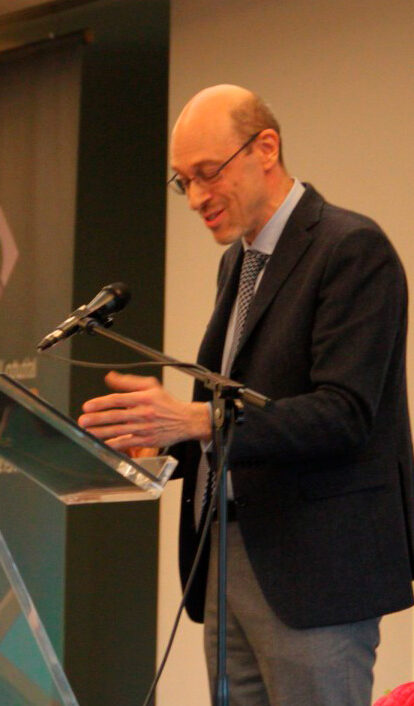
Tamara Pastorelli
Photo: © Lucia Ciciriello – www.loppiano.it
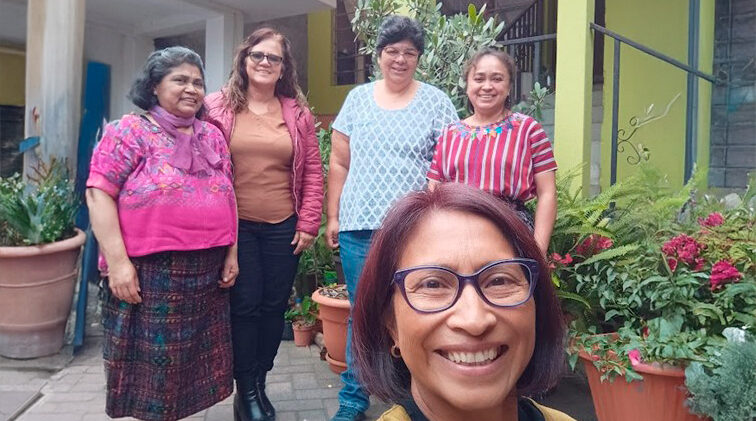
Marta, Lina, Efi and Moria are four women, four focolarine, who have followed different paths in life and who have now found common ground between dreams and reality. They chose to move to Chimaltenango from their previous communities, embarking on an experience of living in a multicultural city where poverty and ethnic fractures are part of everyday life.
Chimaltenango is a city in Guatemala, 50 km from the capital, at an altitude of 1800 meters above sea level. Nearly 120,000 inhabitants of 23 different indigenous peoples have settled there in order to survive economically.
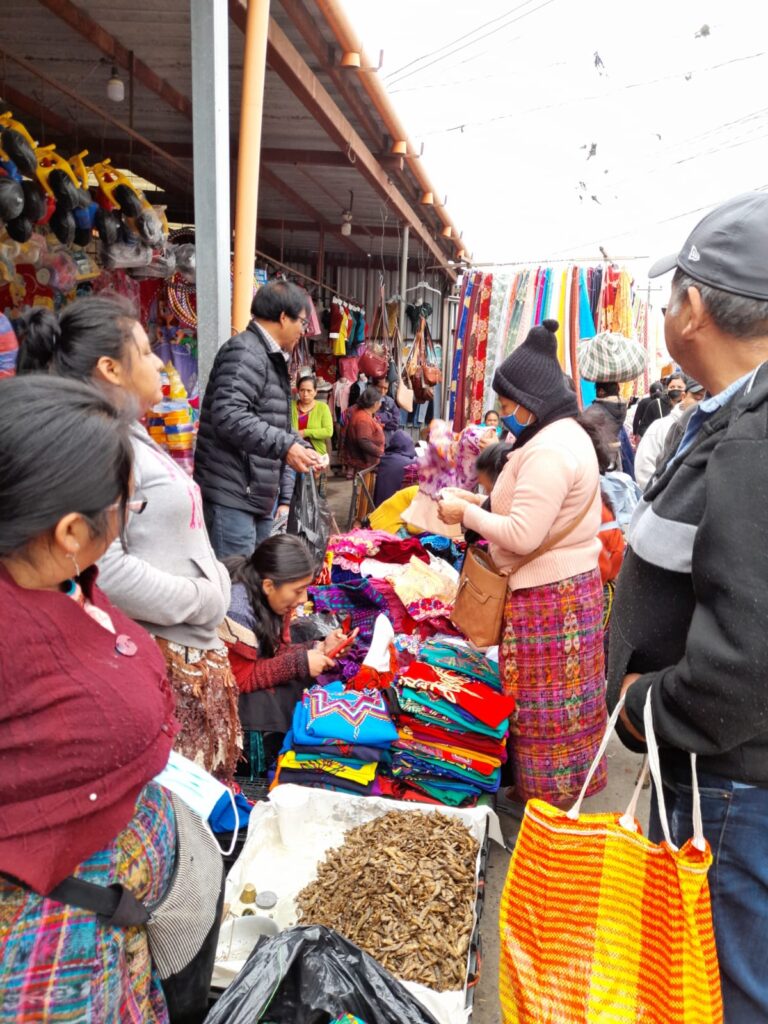
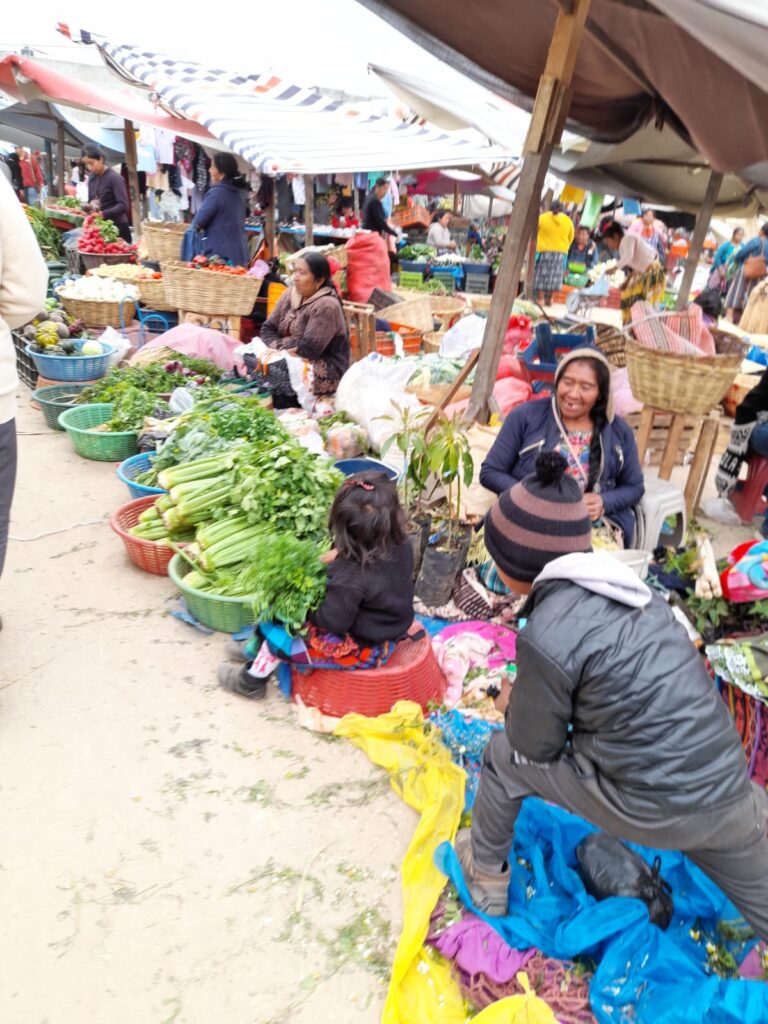
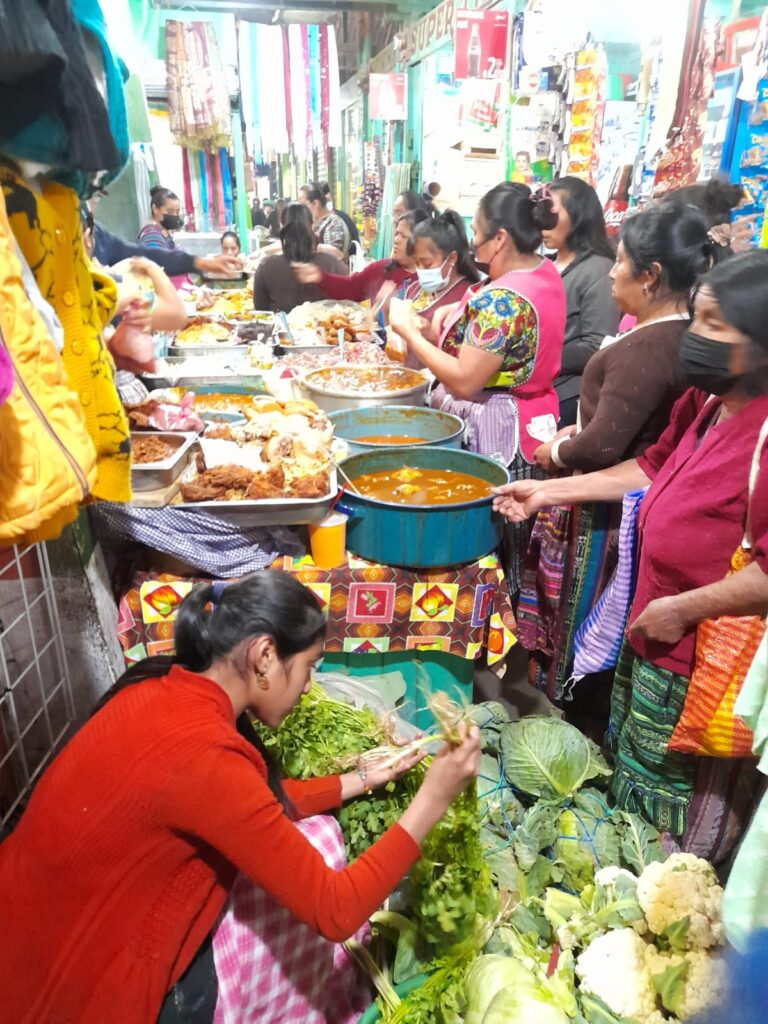
Efi, from Panama told us, “I lived in Argentina for many years. Then I spent a few years in Mexico and, just before the pandemic, I arrived in Guatemala where I remained only 3 months as I had to return to Panama to be close to my mother who became ill and then passed away. That was a year that also helped me to rethink many things, to take stock of what I had lived up to that point and to renew my choice of donation to God made years ago”. She returned to Guatemala for this project in Chimaltenango.
She continued, “I grew up in a rural environment among very simple people and my dream has always been to do something for the humblest in society. There is immense poverty here. And there are also indigenous communities, people who have encountered the spirituality of the Movement and who, due to the pandemic and their social circumstances, have been left on the margins (of society)”.
Lina is Guatemalan, Kaqchikel, of Mayan origin. She explained that one of the most obvious fractures is between indigenous people and mestizos (also called “ladinos” in Guatemala, referring to all those who are not indigenous). Relationships are not fraternal, there is no dialogue. She said, “It has always been a goal for me to endeavour to overcome that fracture. From the moment I had my first contact with the Focolare, I thought that this was the solution for my culture, for my people, for my community. ” She recalled the moment in December 2007 when, at the end of her course of formation to become a focolarina, she greeted Chiara Lubich and said to her: “I am indigenous and I am committed to bringing this light to my Kaqchikel people”. She remembered that she “felt that it was a commitment expressed to Chiara but made to Jesus”. Upon her return to Guatemala, she dedicated herself to working with young people, always with the aim of generating bonds of unity both in indigenous communities and in the city.
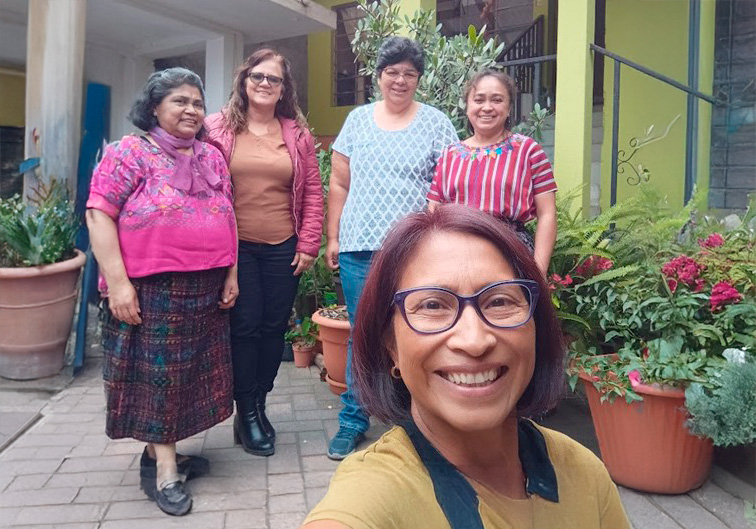
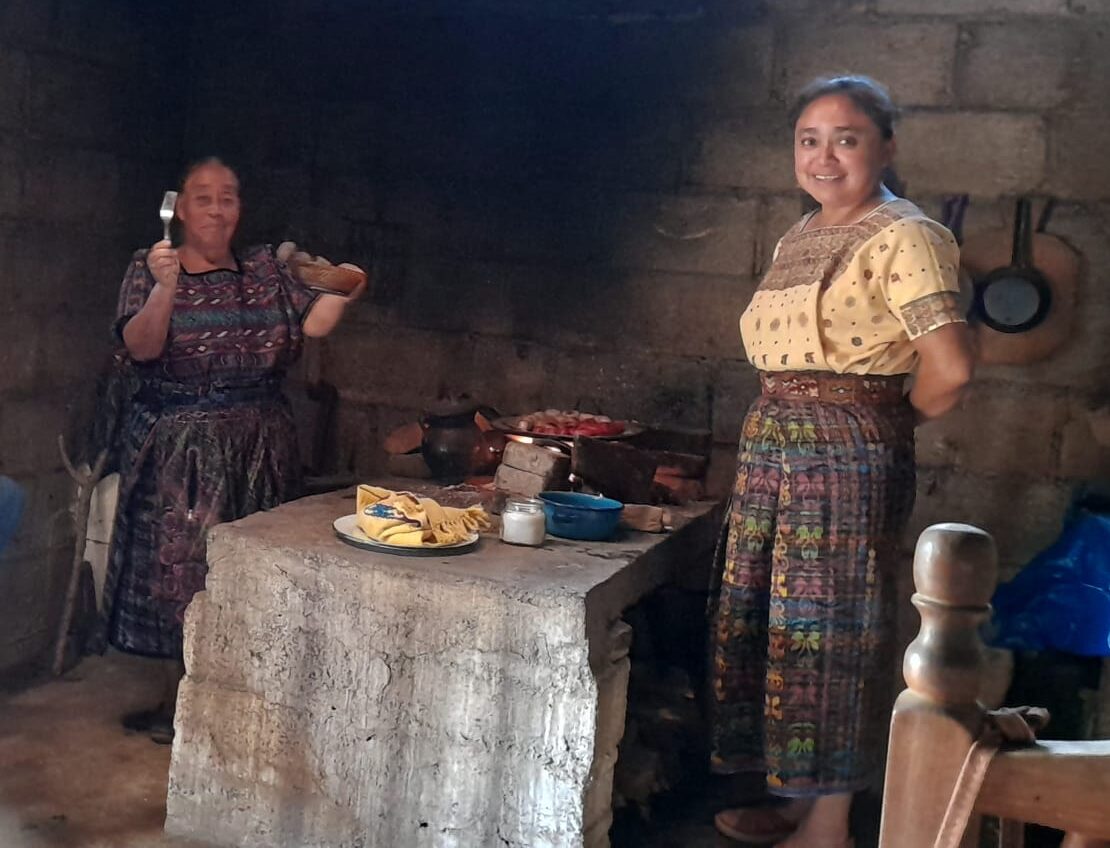
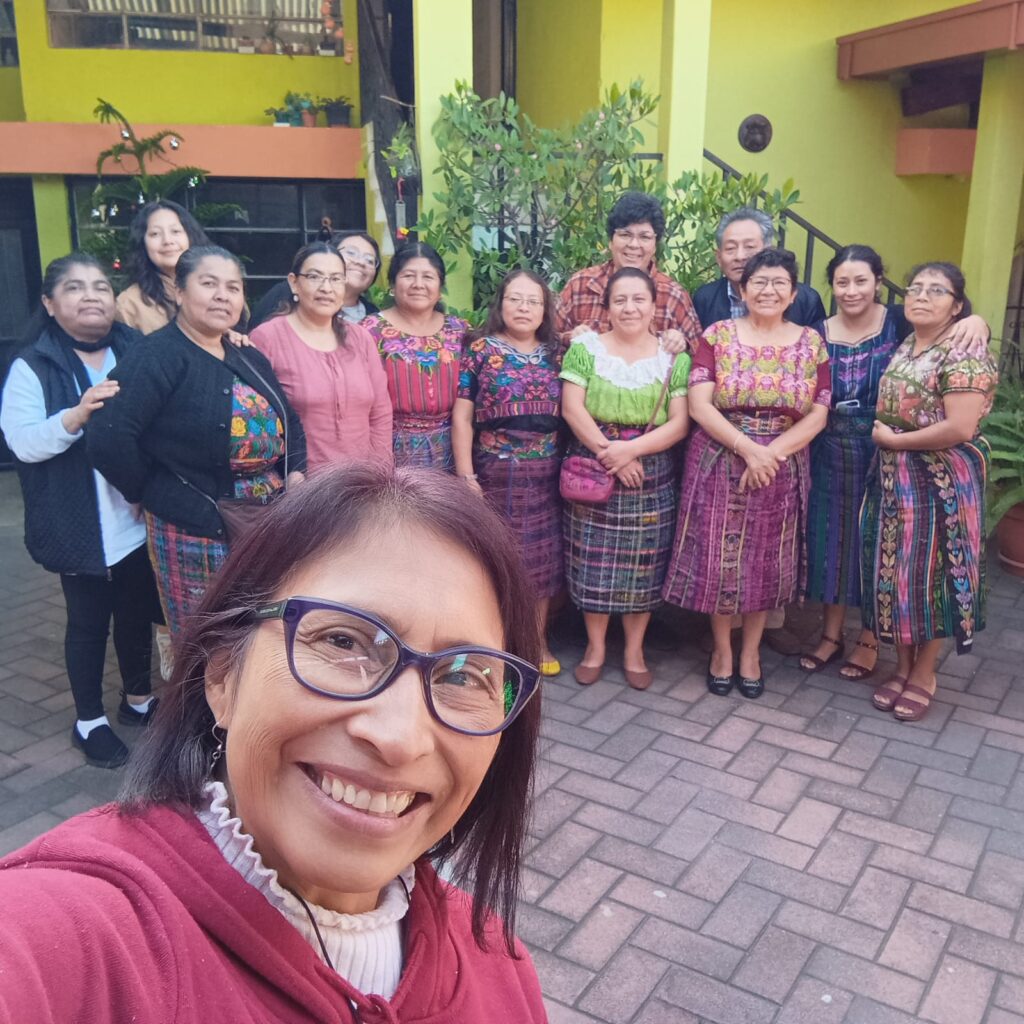
Marta is also from Guatemala, of mixed race. In her early years in the focolare, she was able to devote herself to spreading the charism of unity in indigenous communities. Later, she managed the Mariapolis Centre, the Focolare’s residential centre in Guatemala City. It was a demanding task that lasted 23 years and saw the process of national reconciliation and the reclaiming of indigenous peoples’ rights, because various indigenous communities chose the Mariapolis Centre as a meeting place. Then she was in Mexico for a while. At that time discussions about identity arose and the question arose spontaneously in her: “What is my identity? What are my roots?” She found the answer in the “Virgin of Guadalupe” who, when she appeared in Mexico in 1531, was depicted on Juan Diego’s poncho with physical characteristics typical of native peoples. “For me it was to understand that I was a mestiza like her, that she has both roots and can dialogue with both groups”.
Moria, who is from Chimaltenango, lives with her natural family and is part of the focolare as is Lidia, a married focolarina who lives in Guatemala City.
Stories that intertwine until they settled in this city that unites so many backgrounds and cultures into one. Efi said, “Our desire is to be with people, to get closer. In simple, everyday things: that greeting, that smile, that pausing, simply being with that lady who doesn’t speak Spanish because she speaks her own language and we don’t understand each other”. And she recounted: “One day I needed to buy bread. I went to the market and the women who were selling were sitting on a wicker mat. If I wanted to begin a conversation with one of them, I would bend down to be on the same level and since it was a place for trading, I would try to be fair with her”.
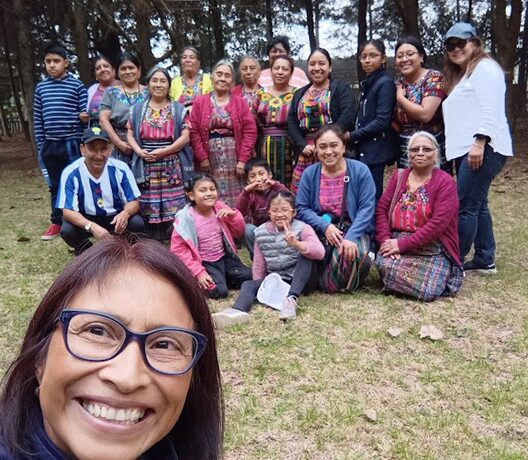
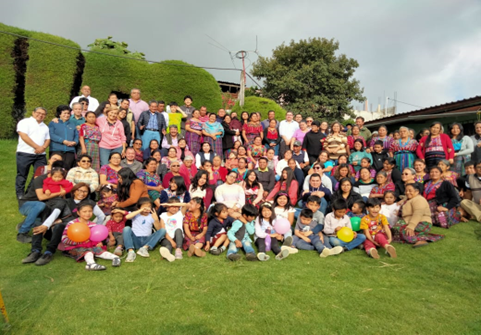
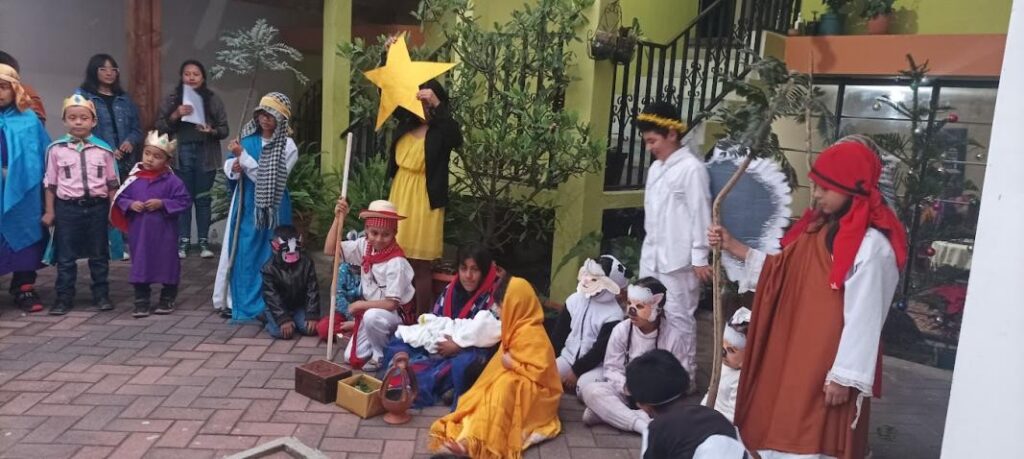
Lina added, “Since we arrived, we have tried to reconnect with people who met the spirituality of unity over past years, by going to visit them in their homes, bringing something, for example some fruit, as is the custom”. In this way, a circle of reciprocity has grown and people began to keep in touch with the focolare which is now often filled with the voices of mothers with their children, young people and, sometimes, some fathers who pluck up the courage to come too. And so, almost effortlessly, a community has formed around this new focolare in the heart of Guatemala’s indigenous culture.
Carlos Mana
Photo: © Focolar Chimaltenango
Give priority to prayer